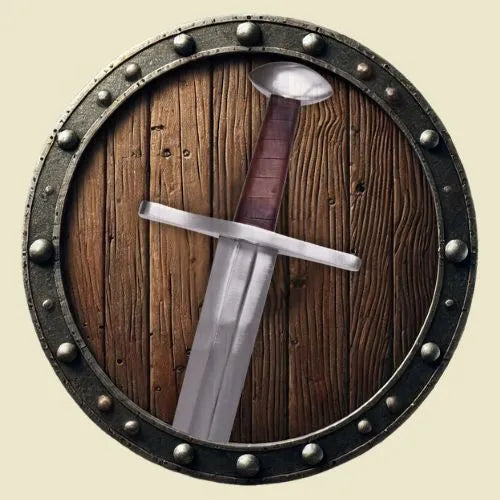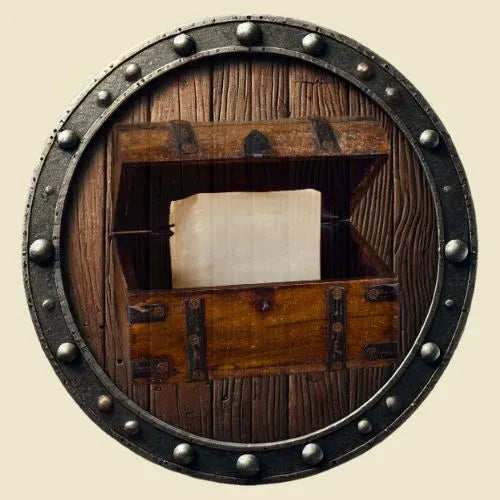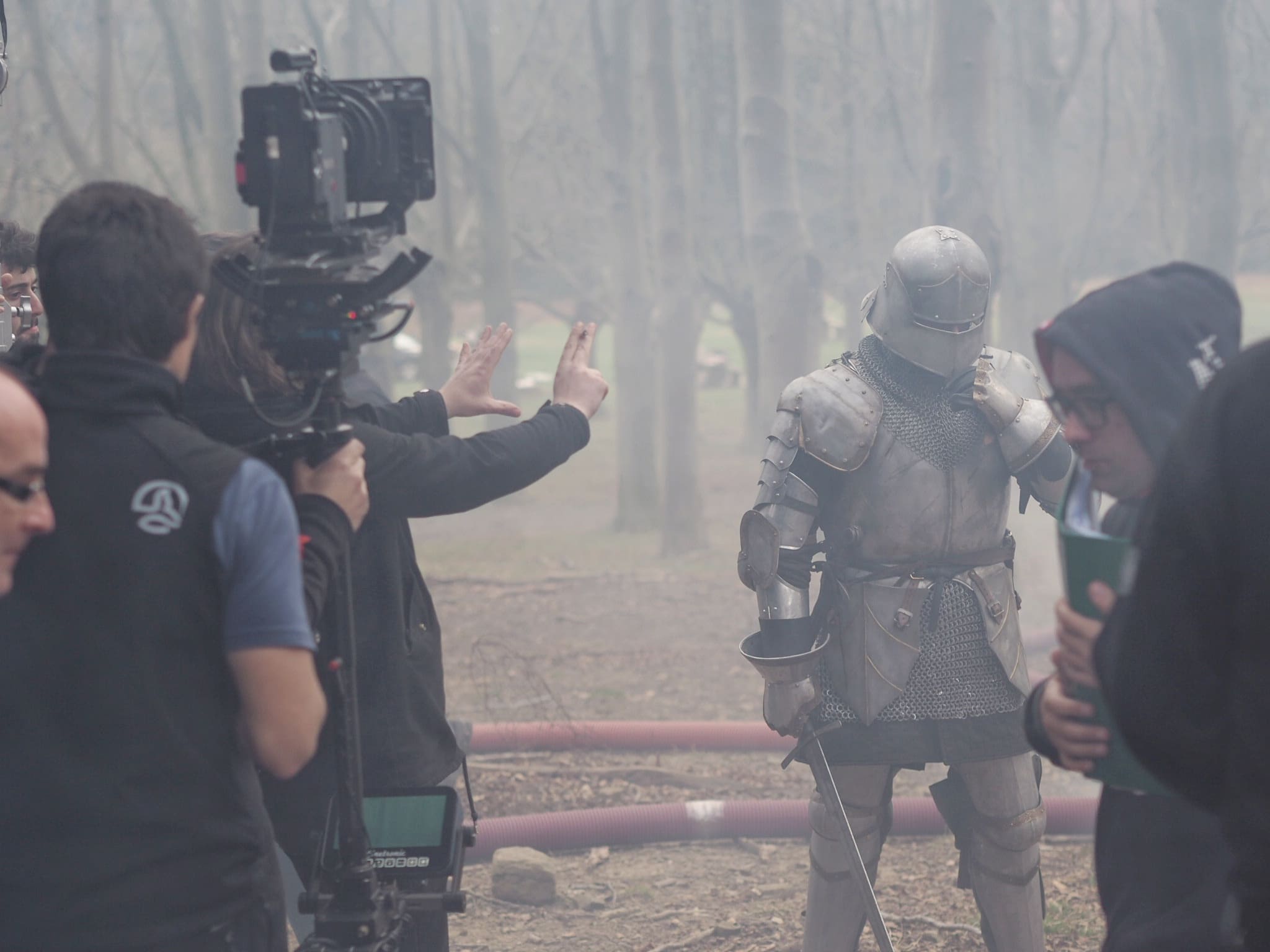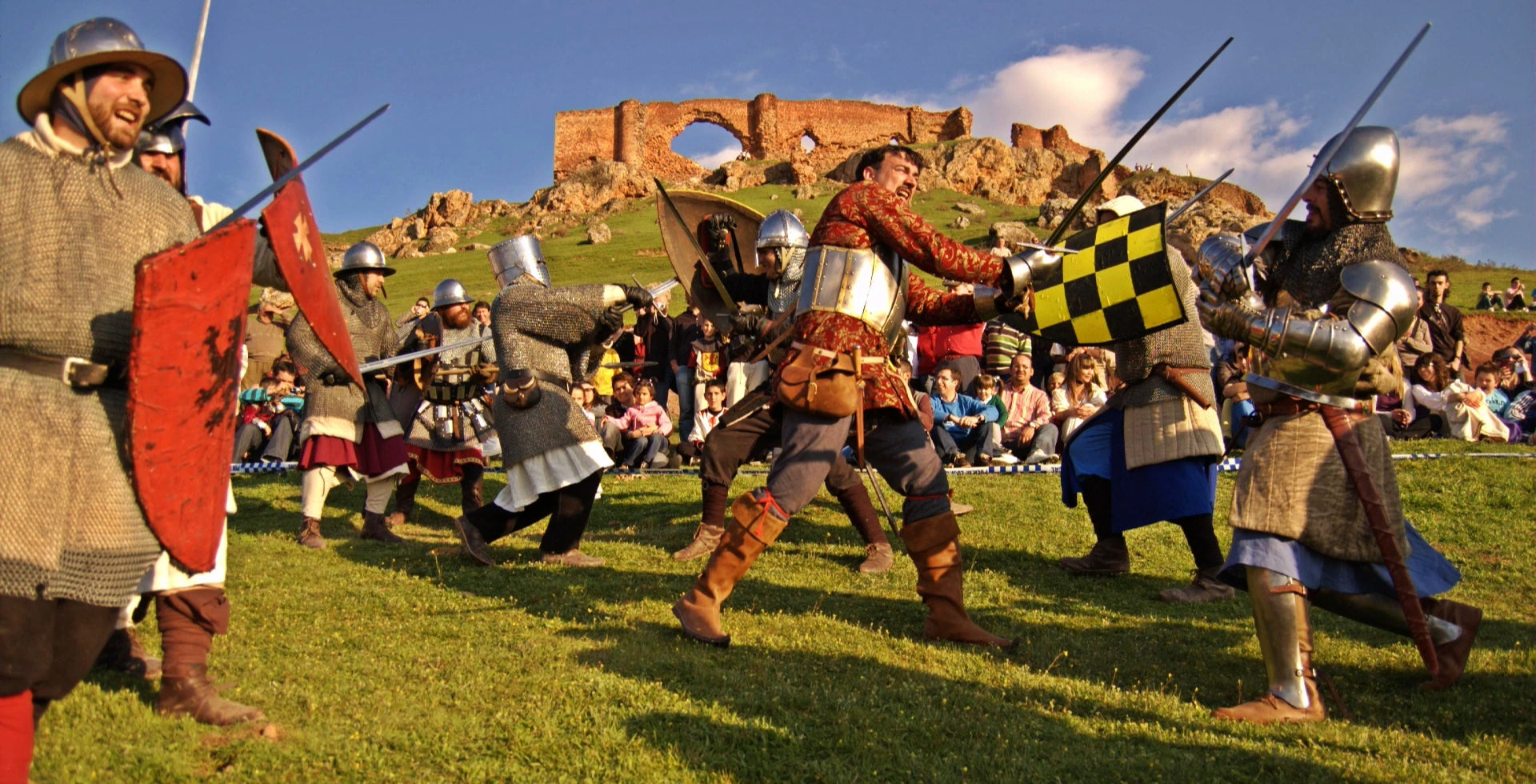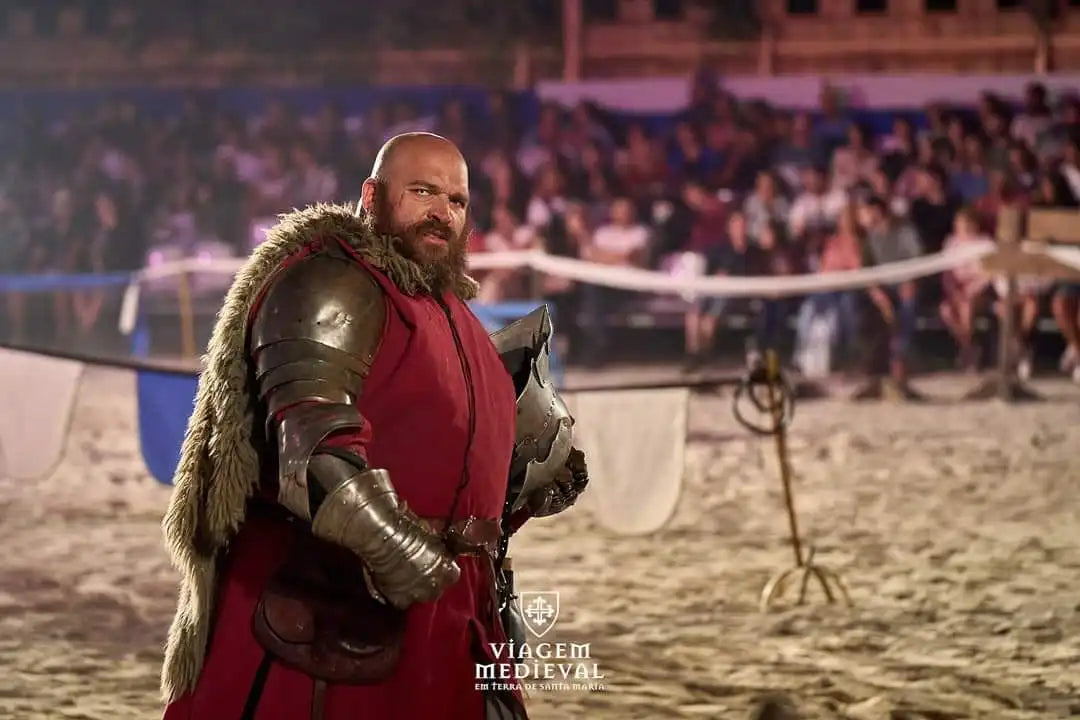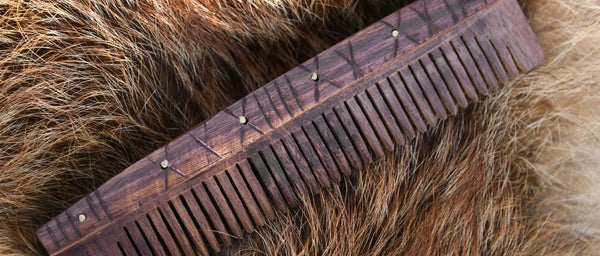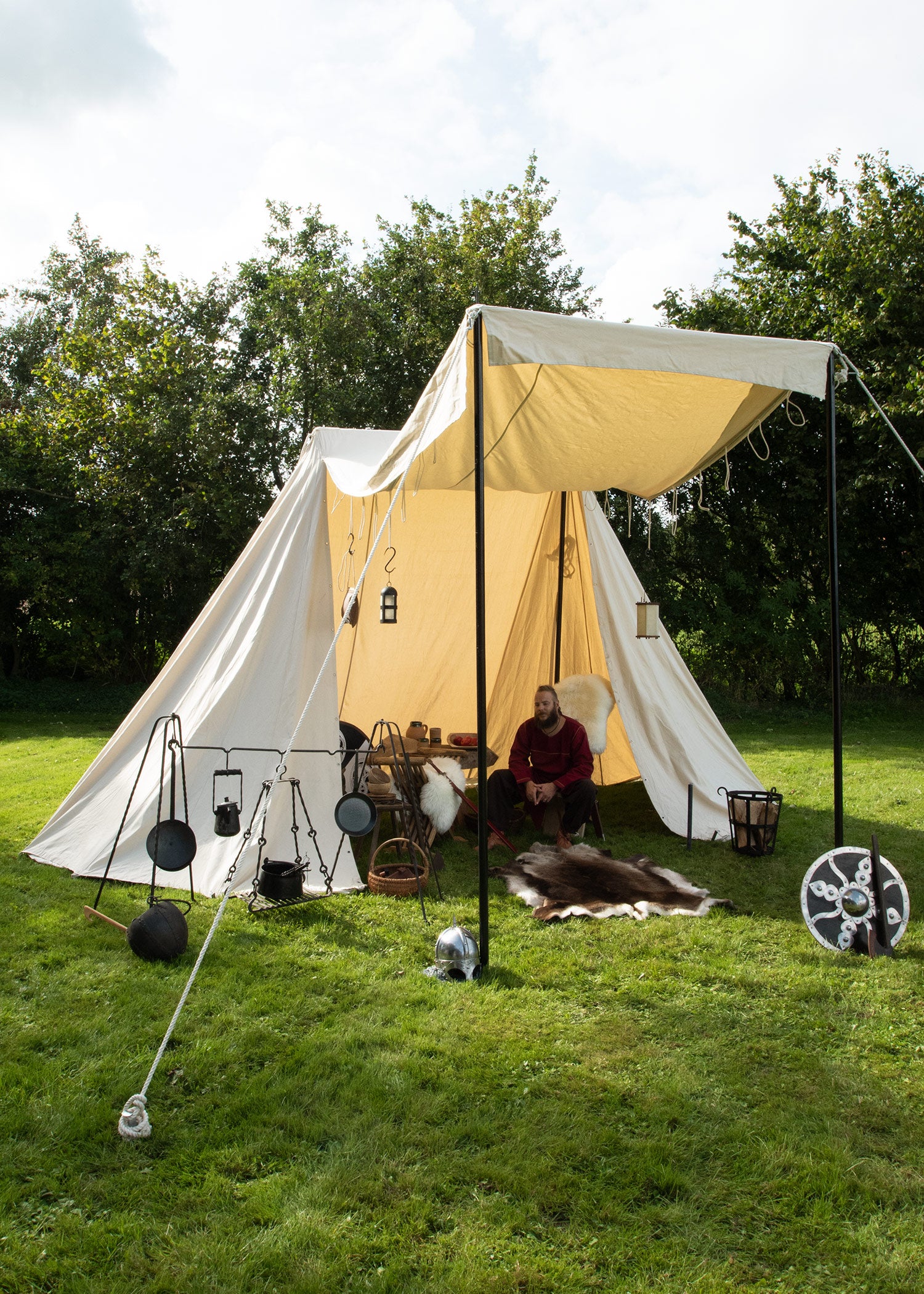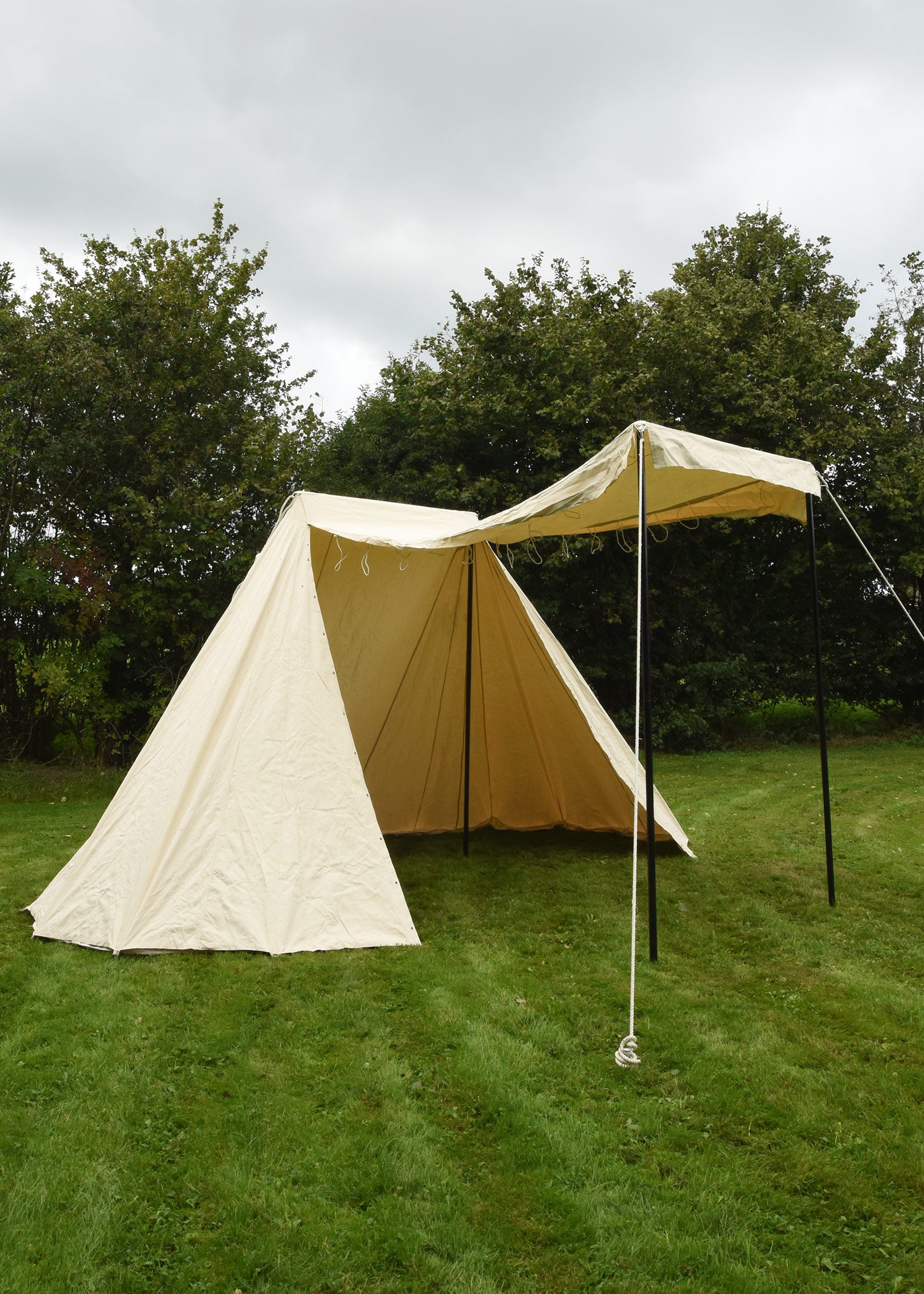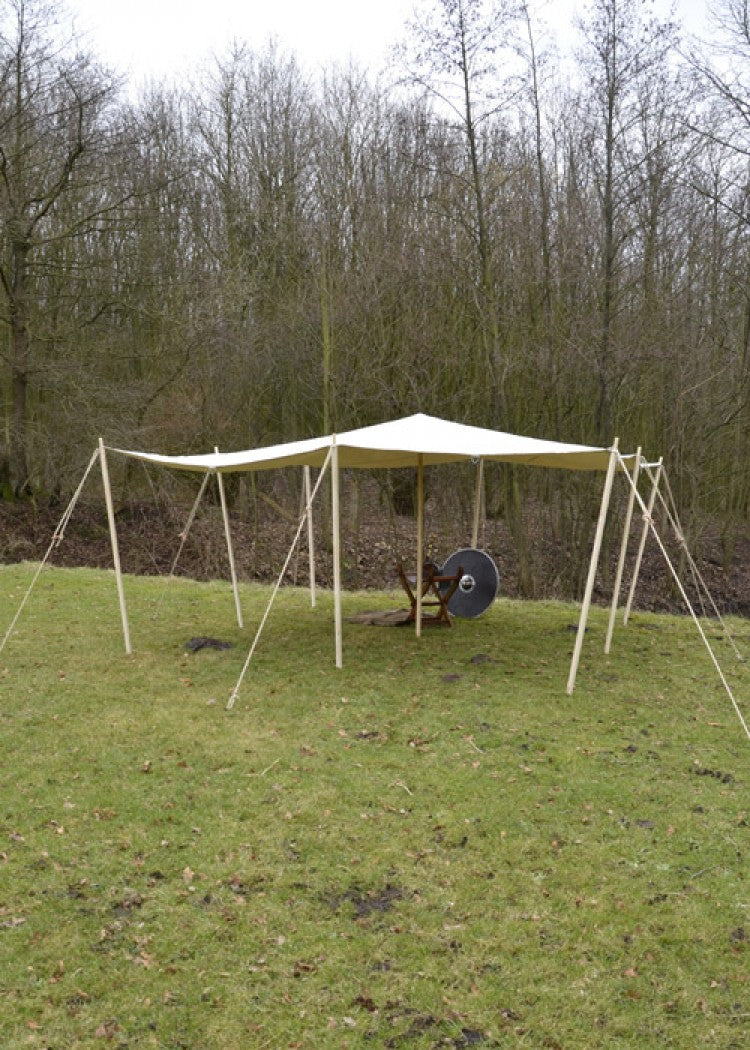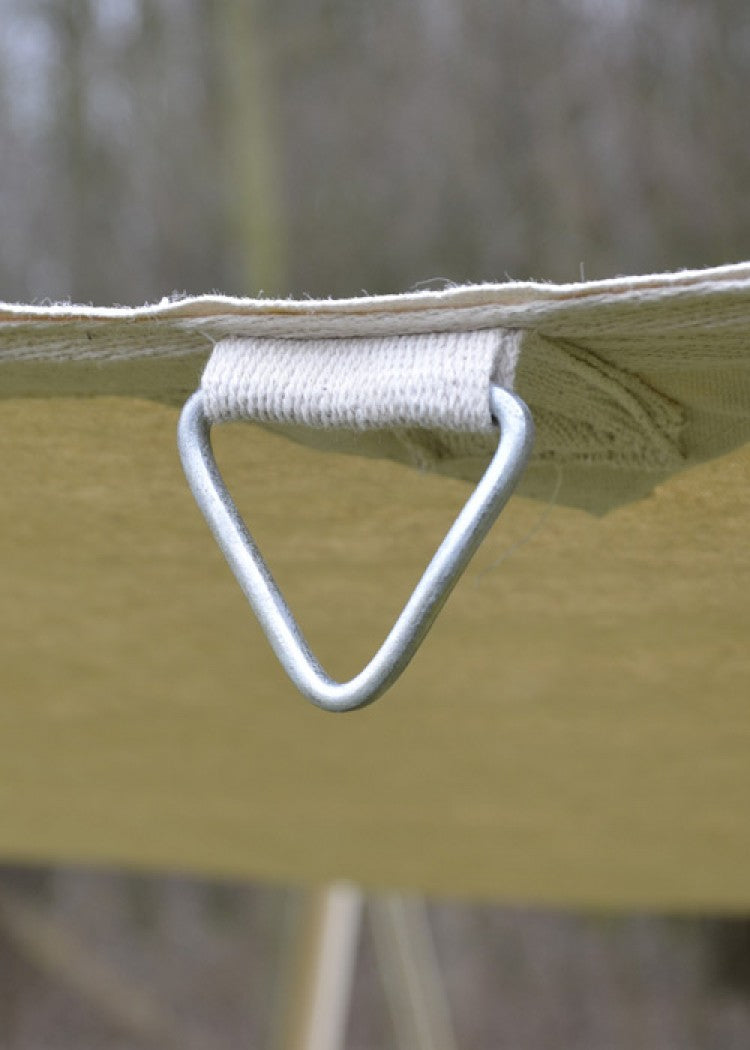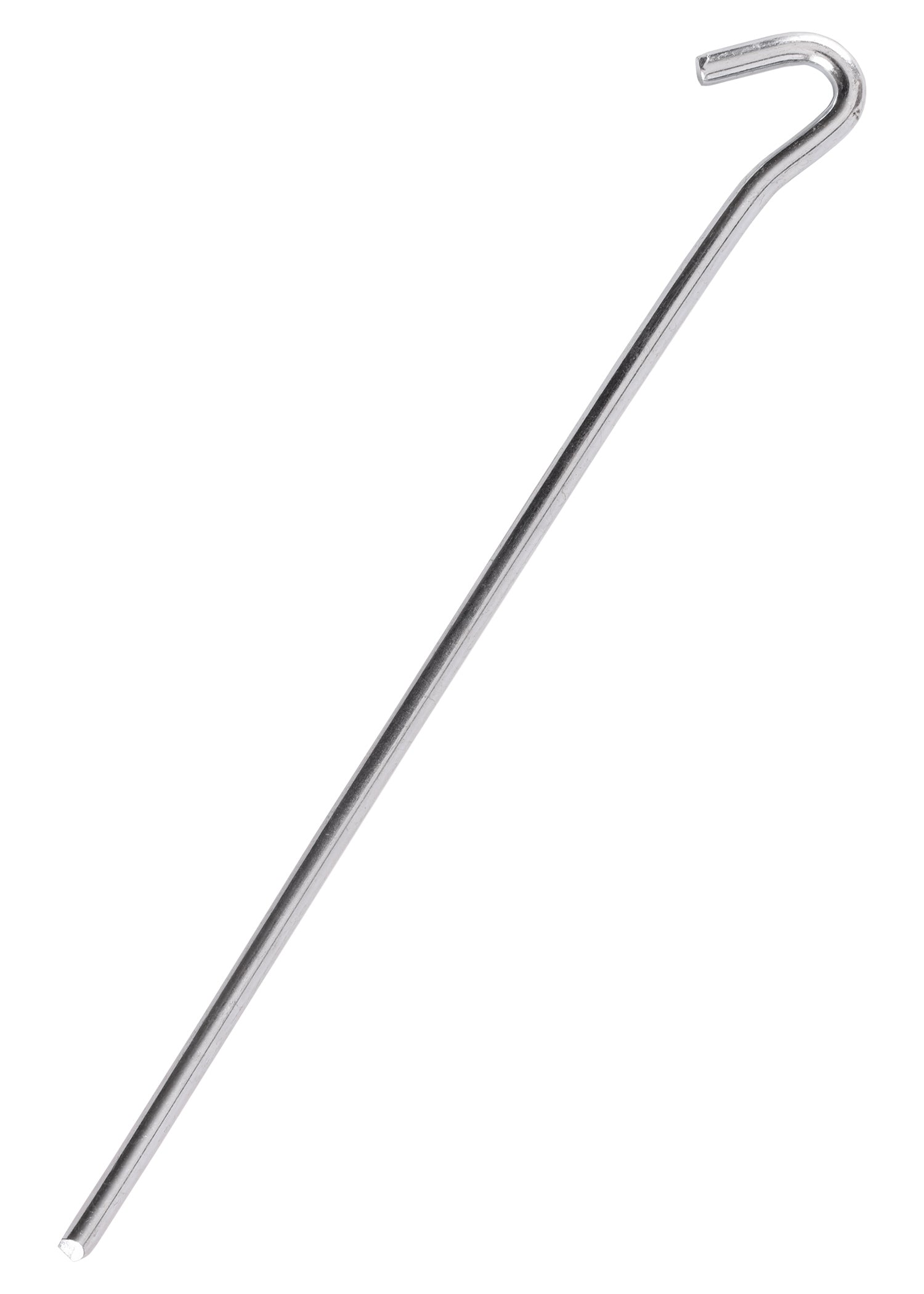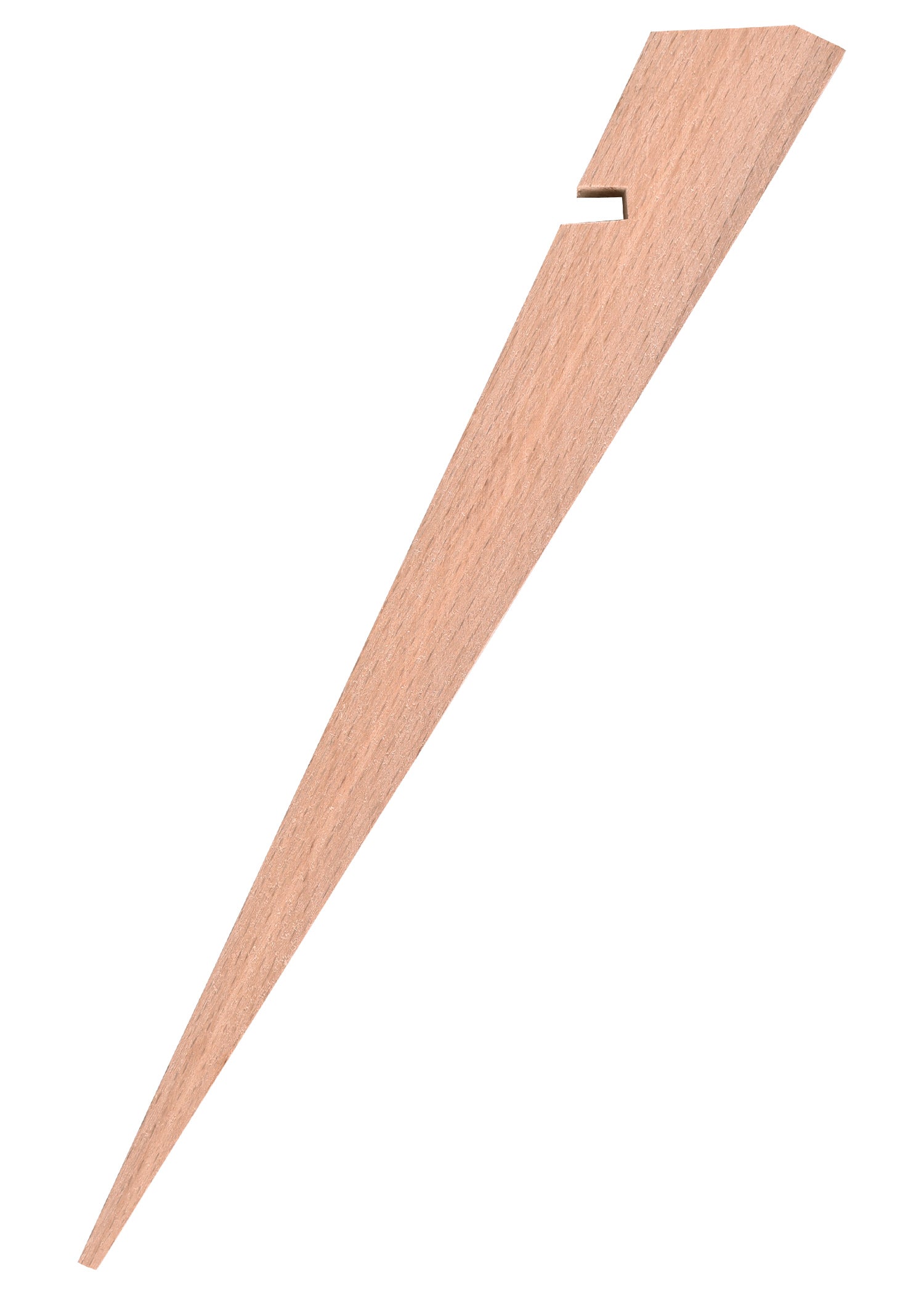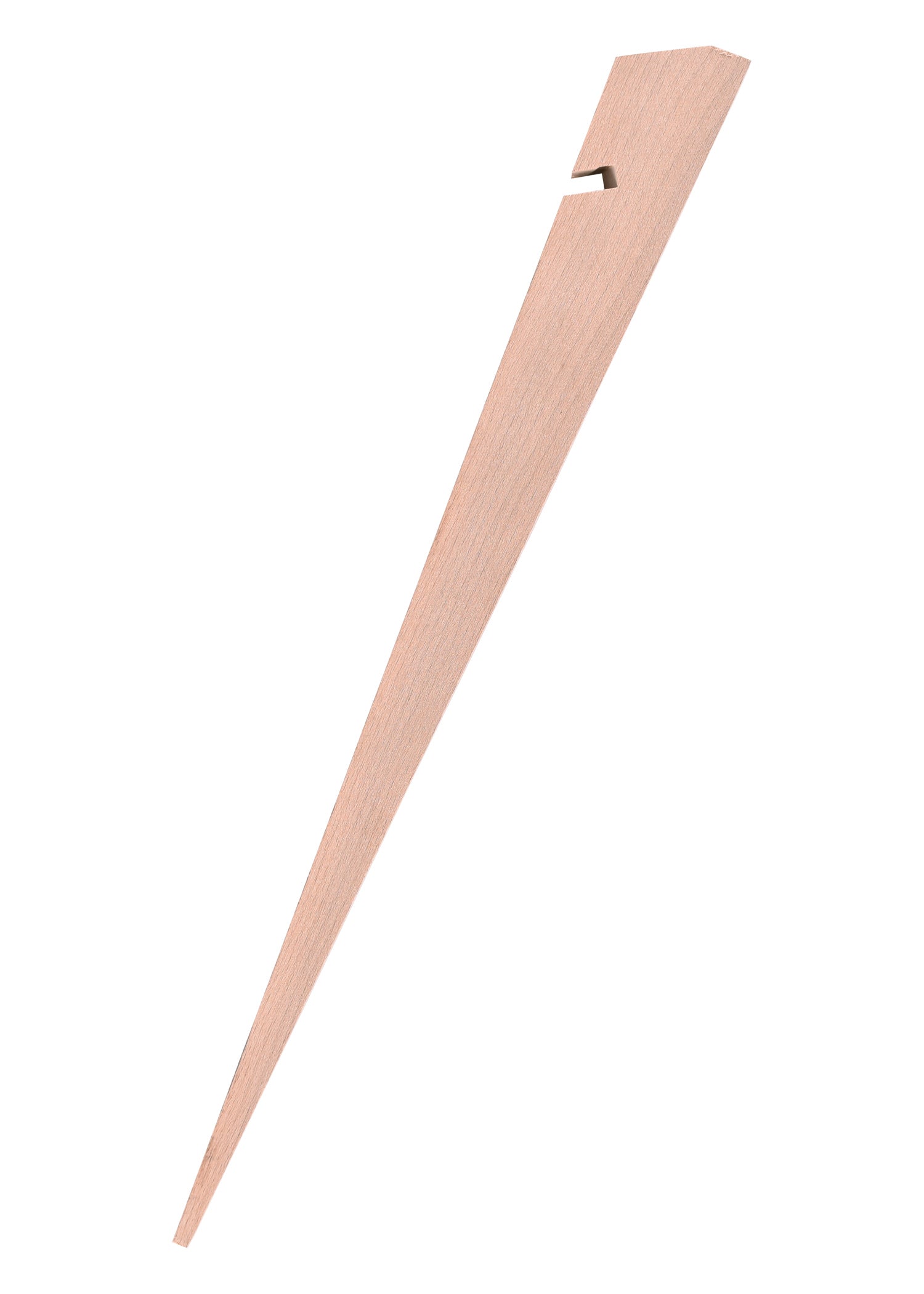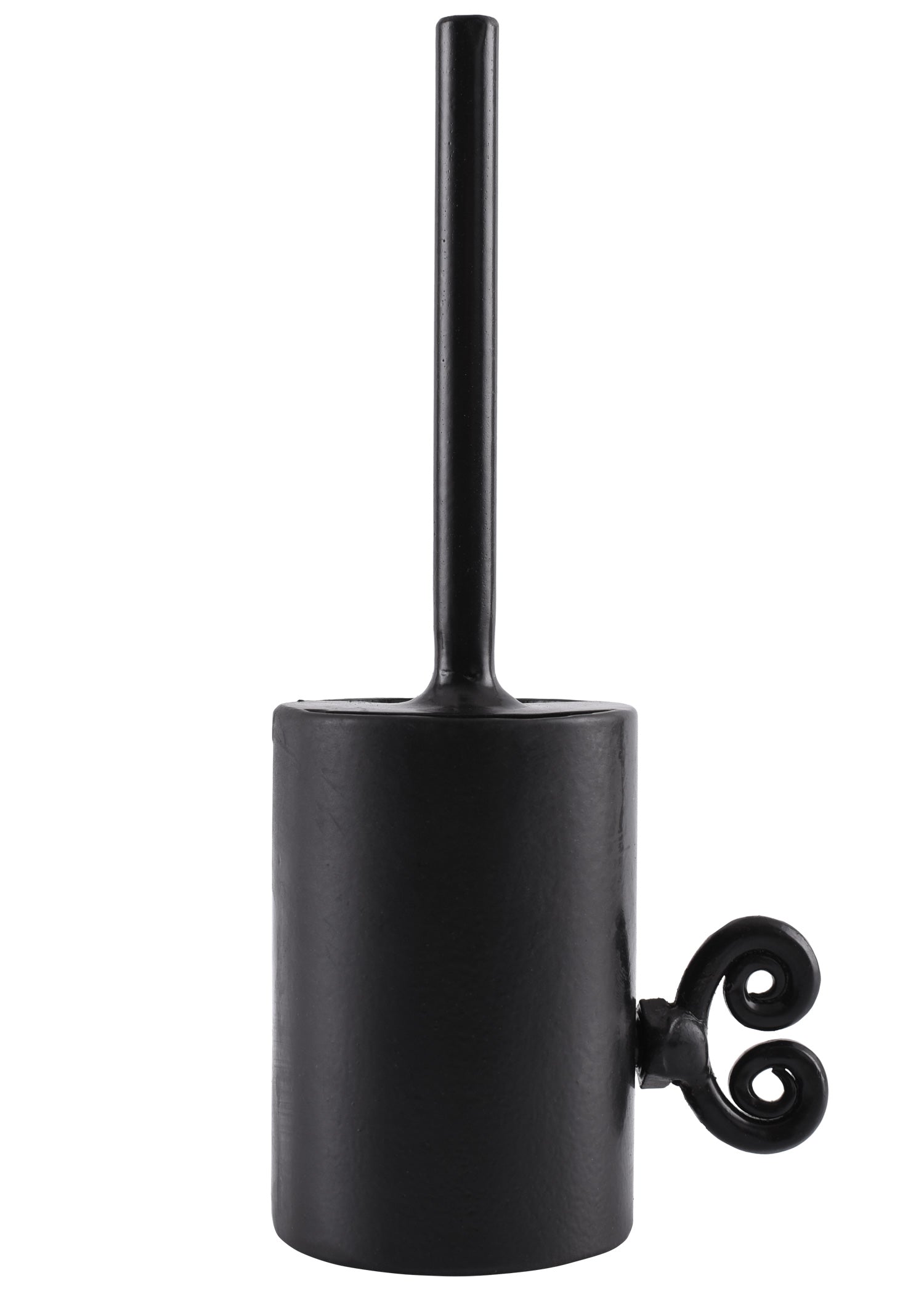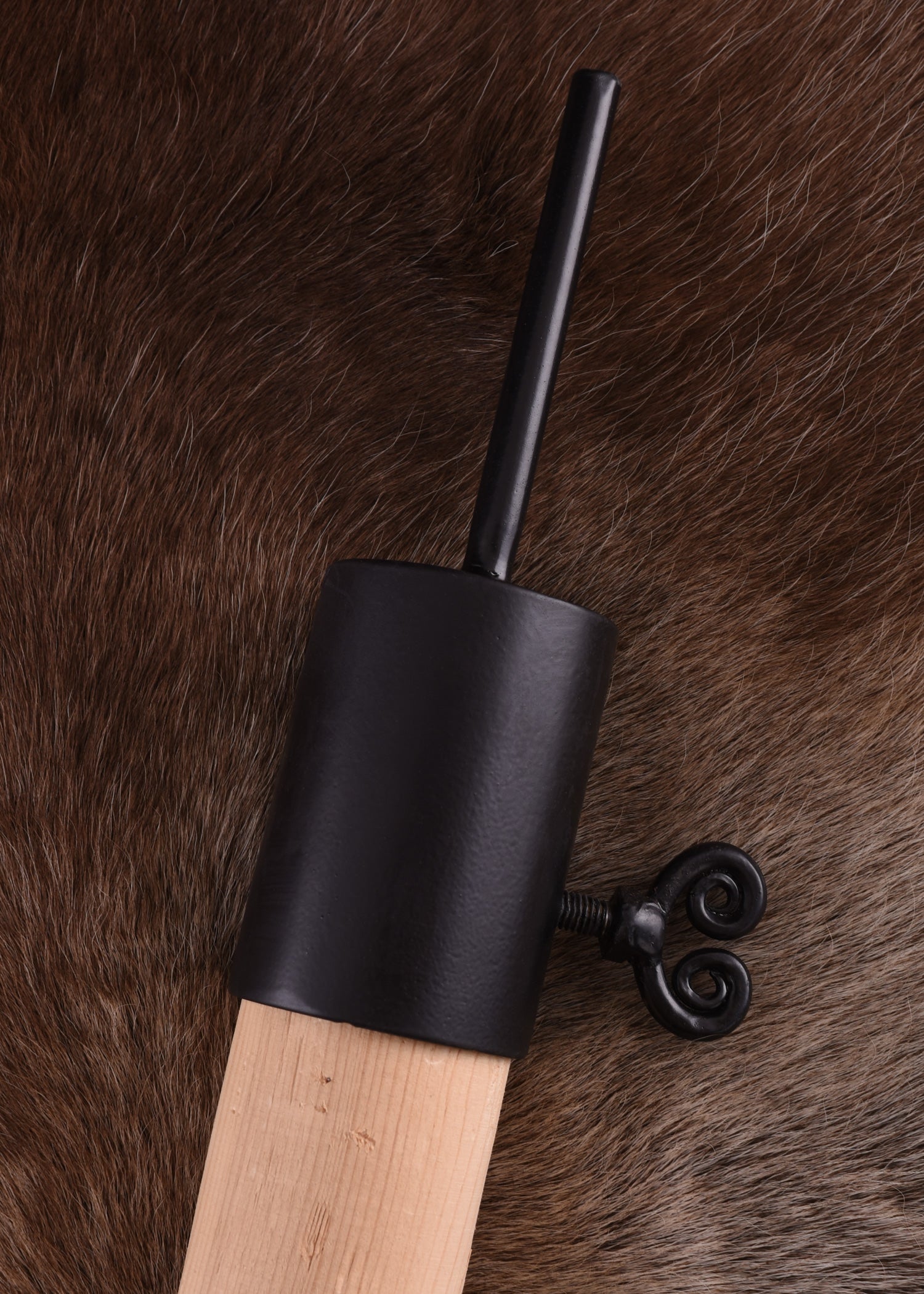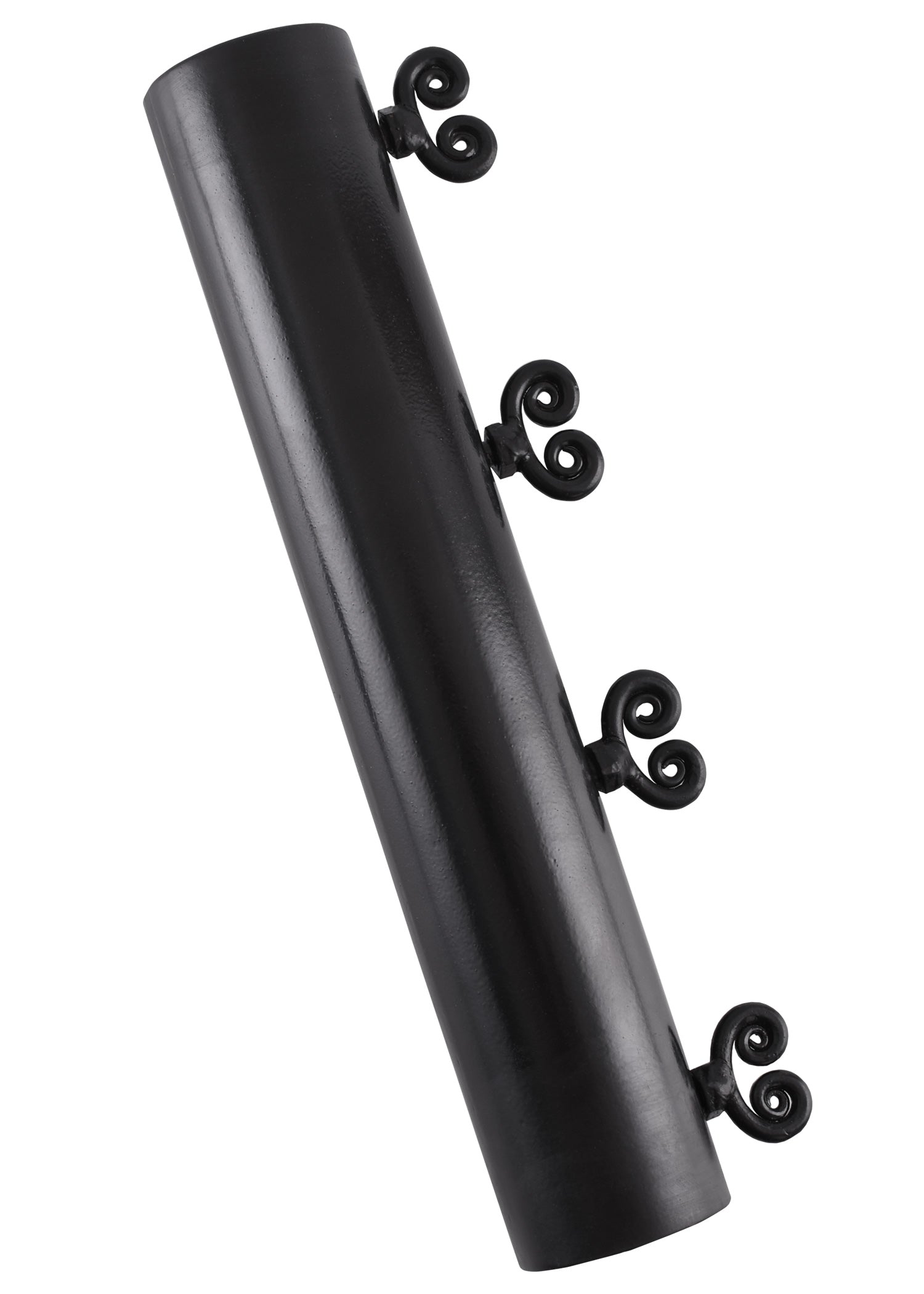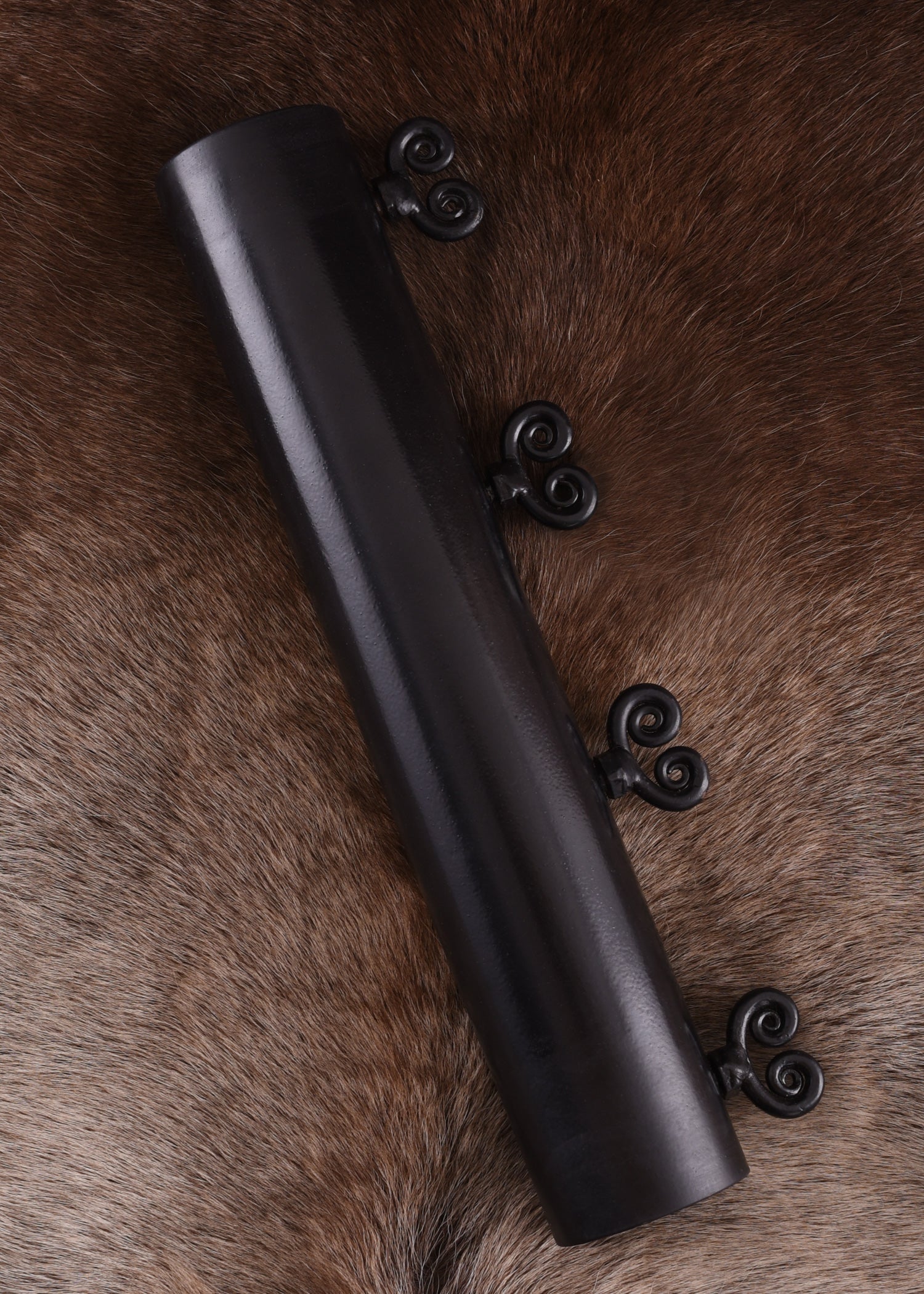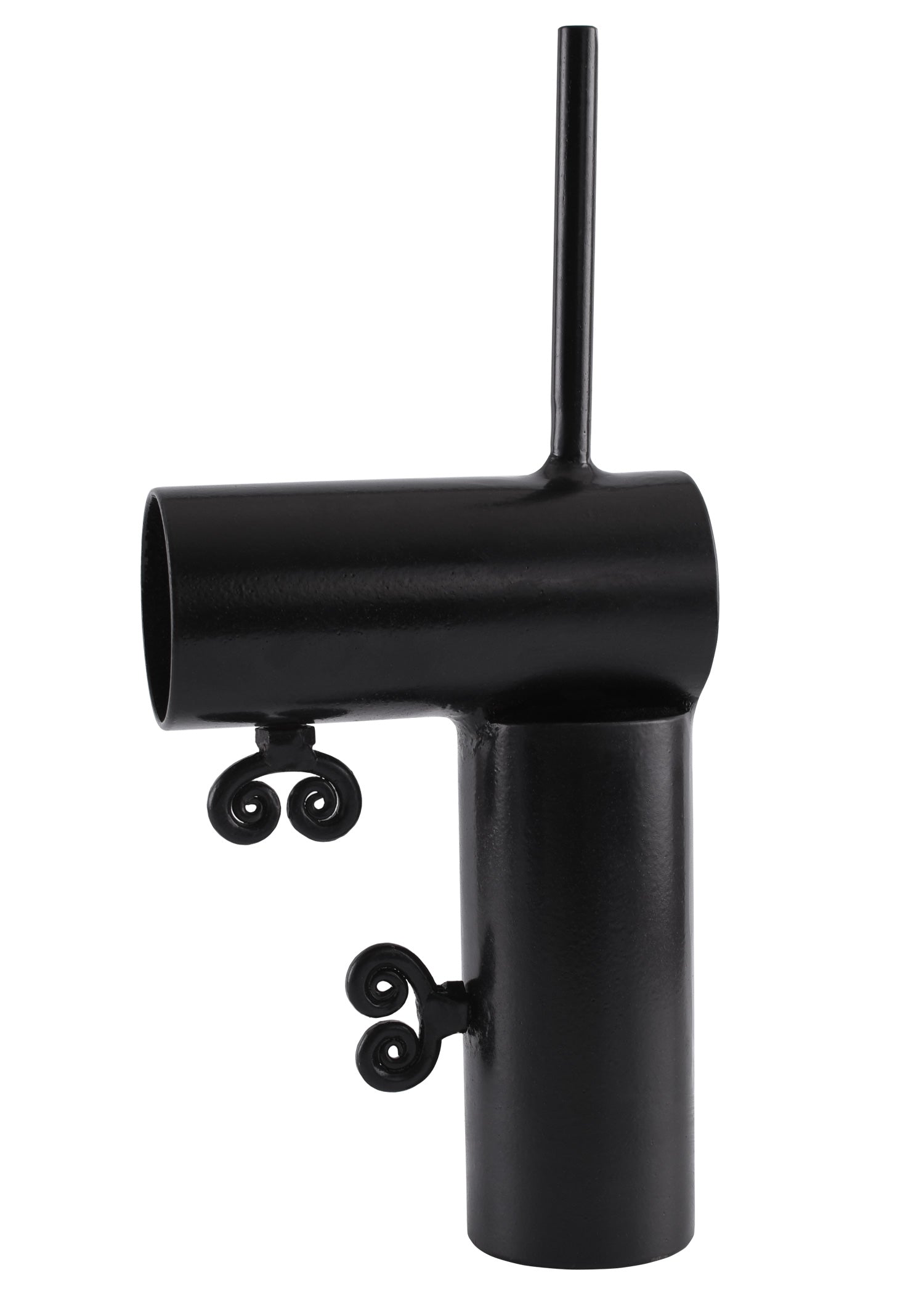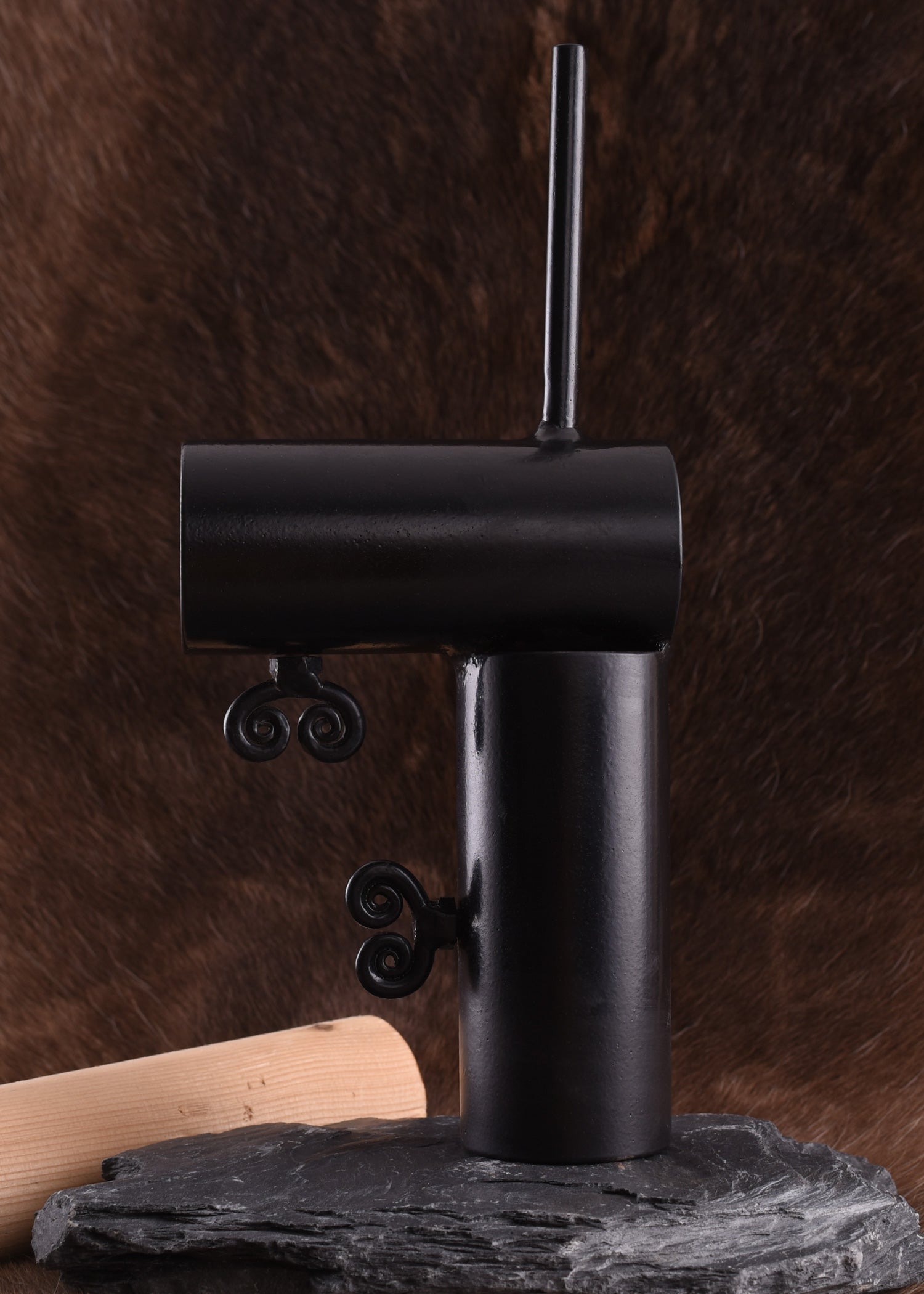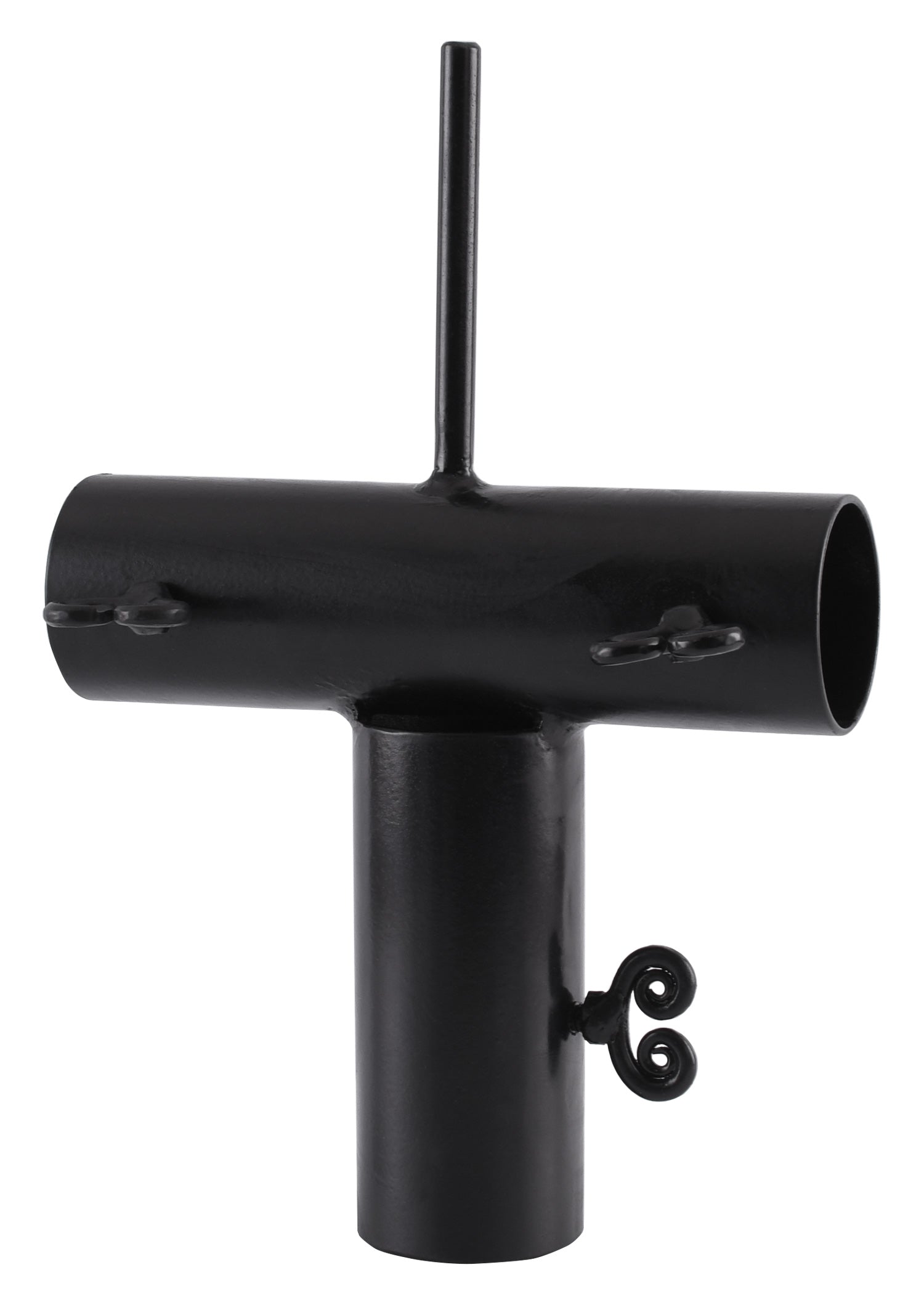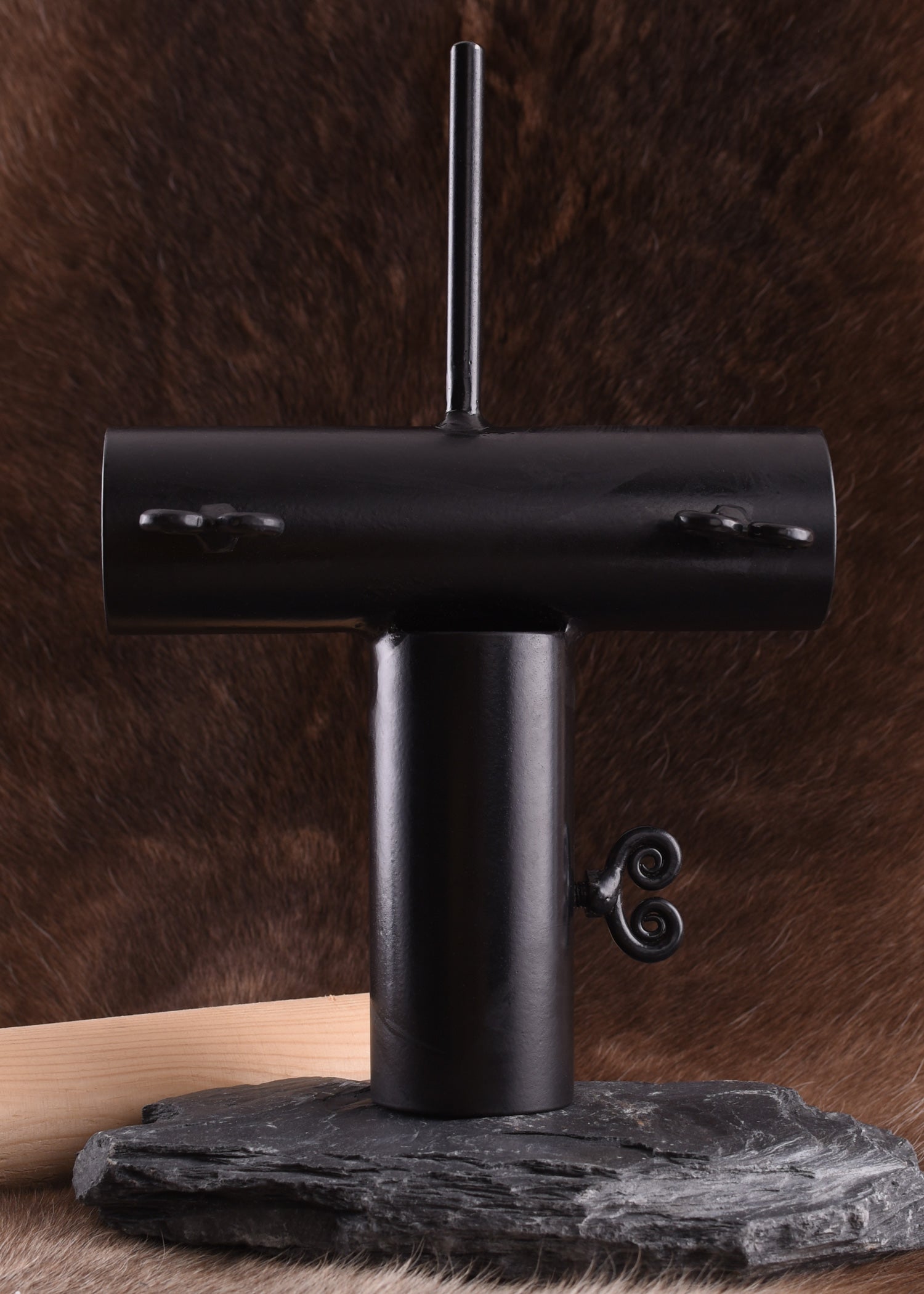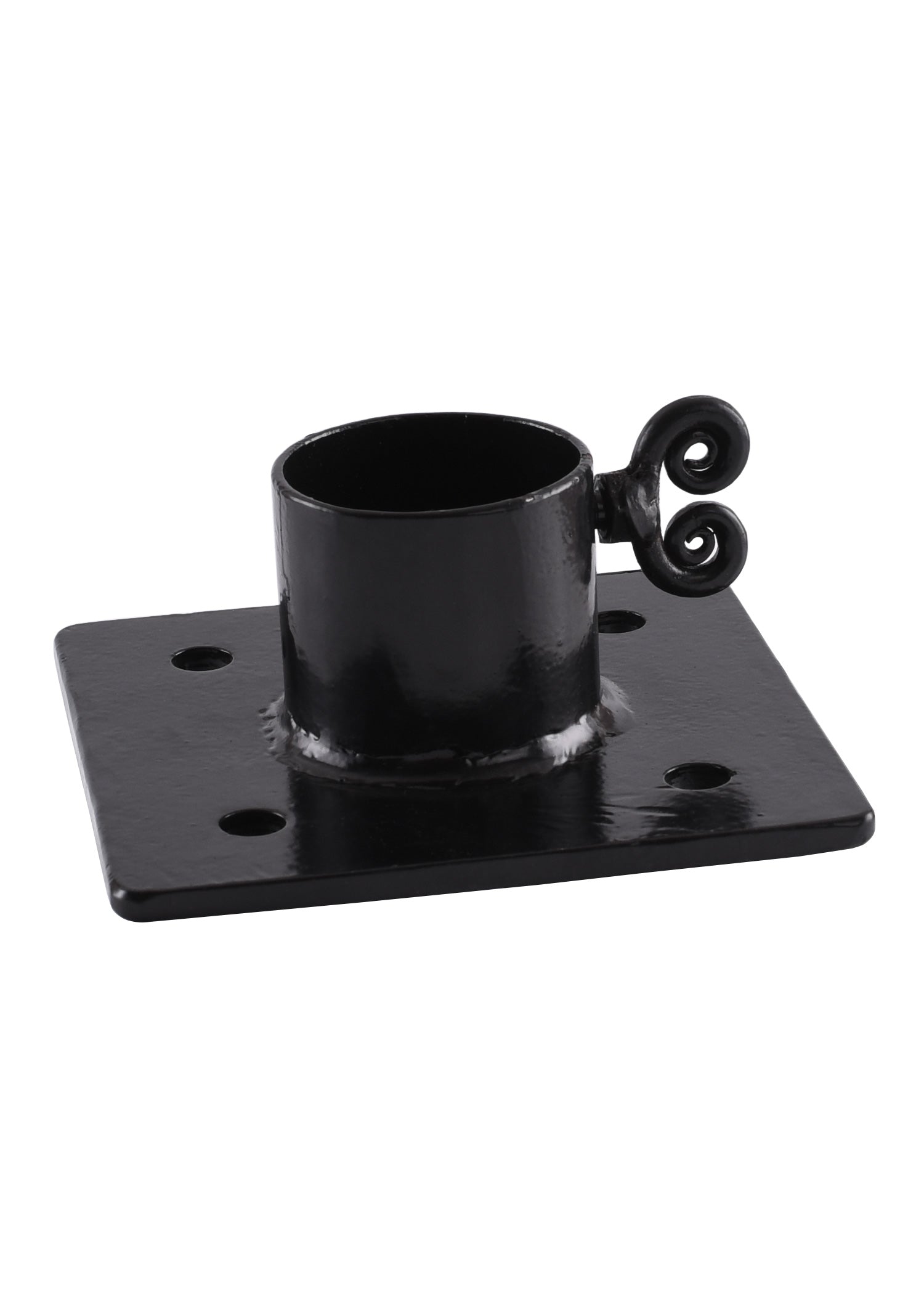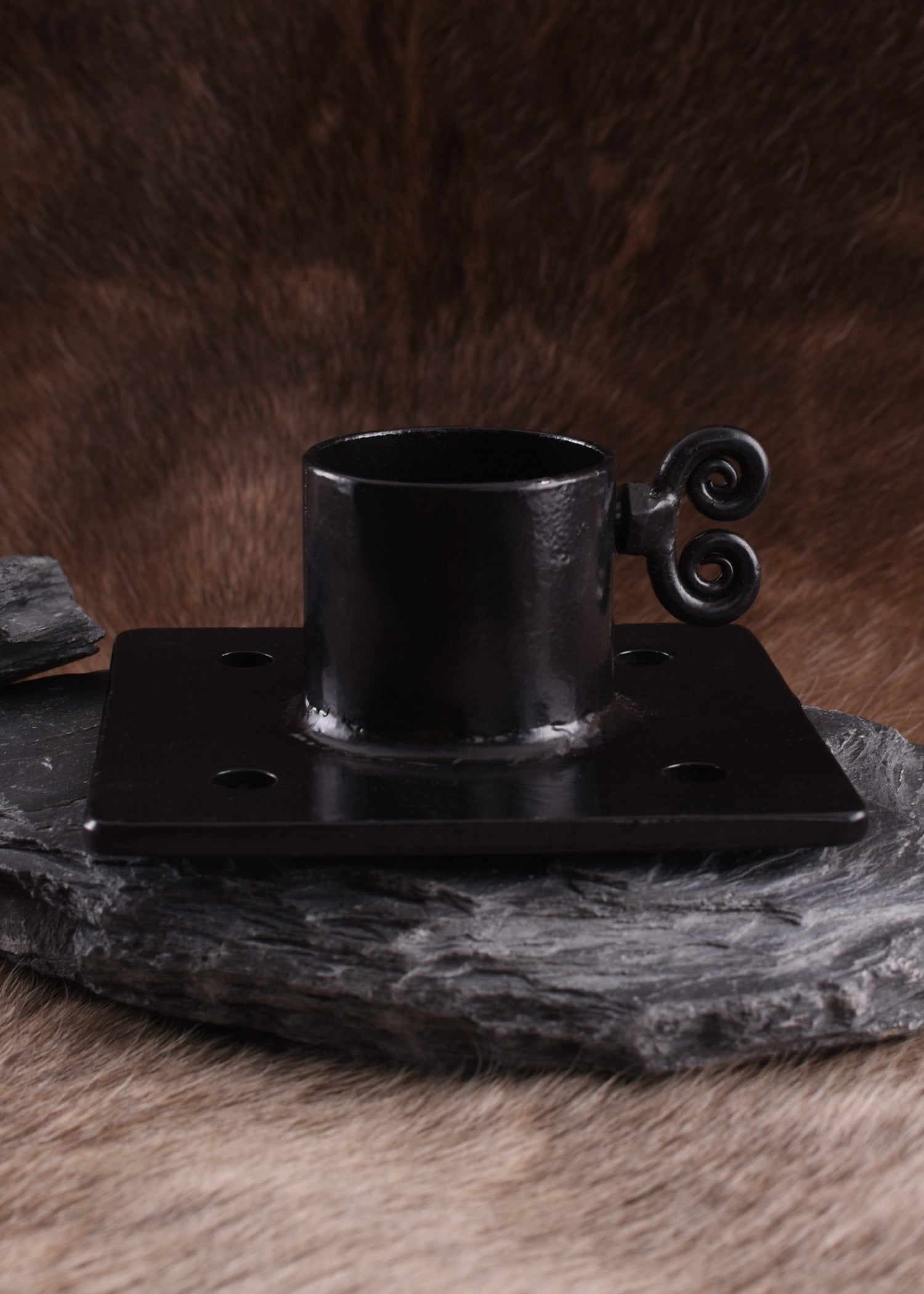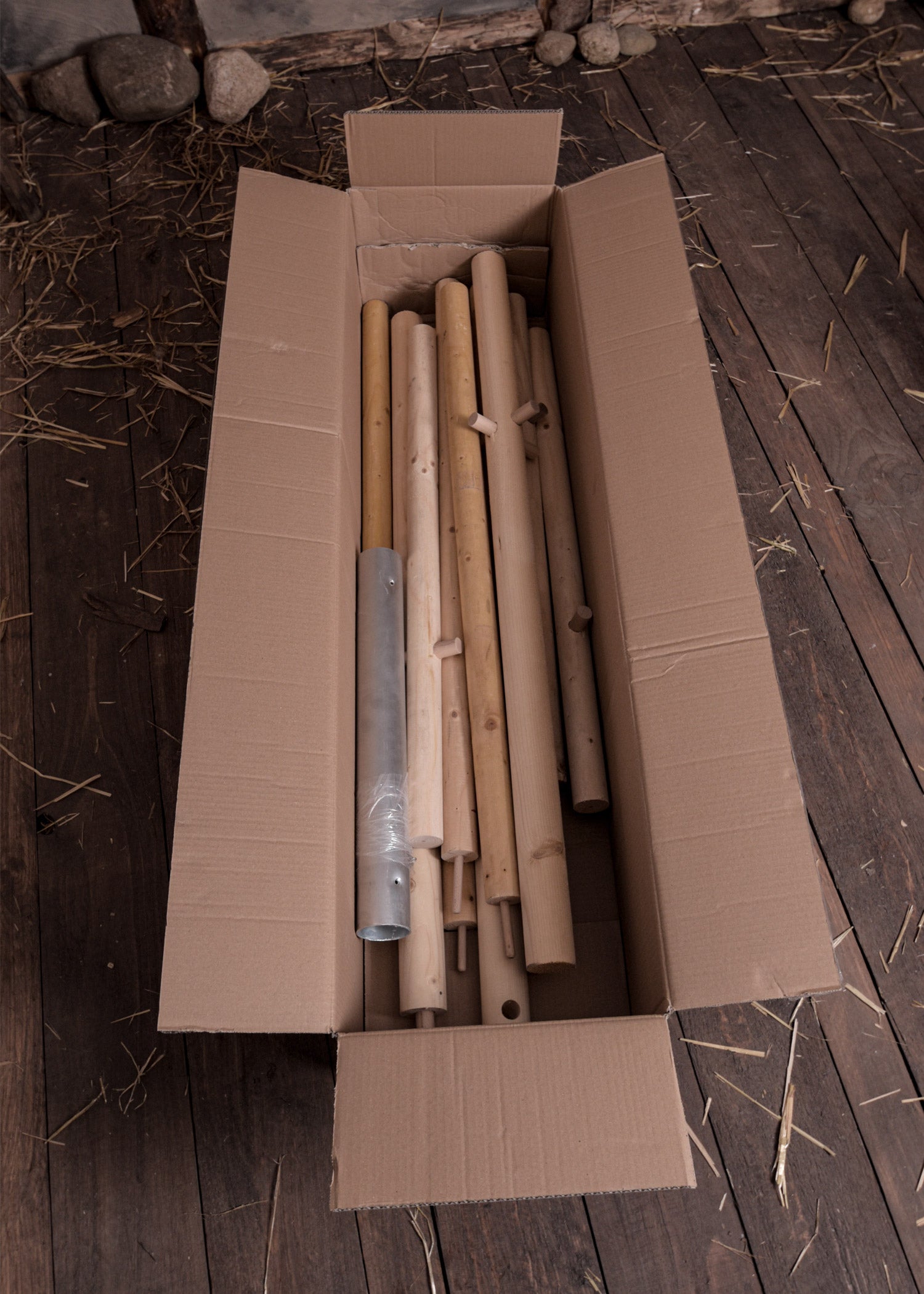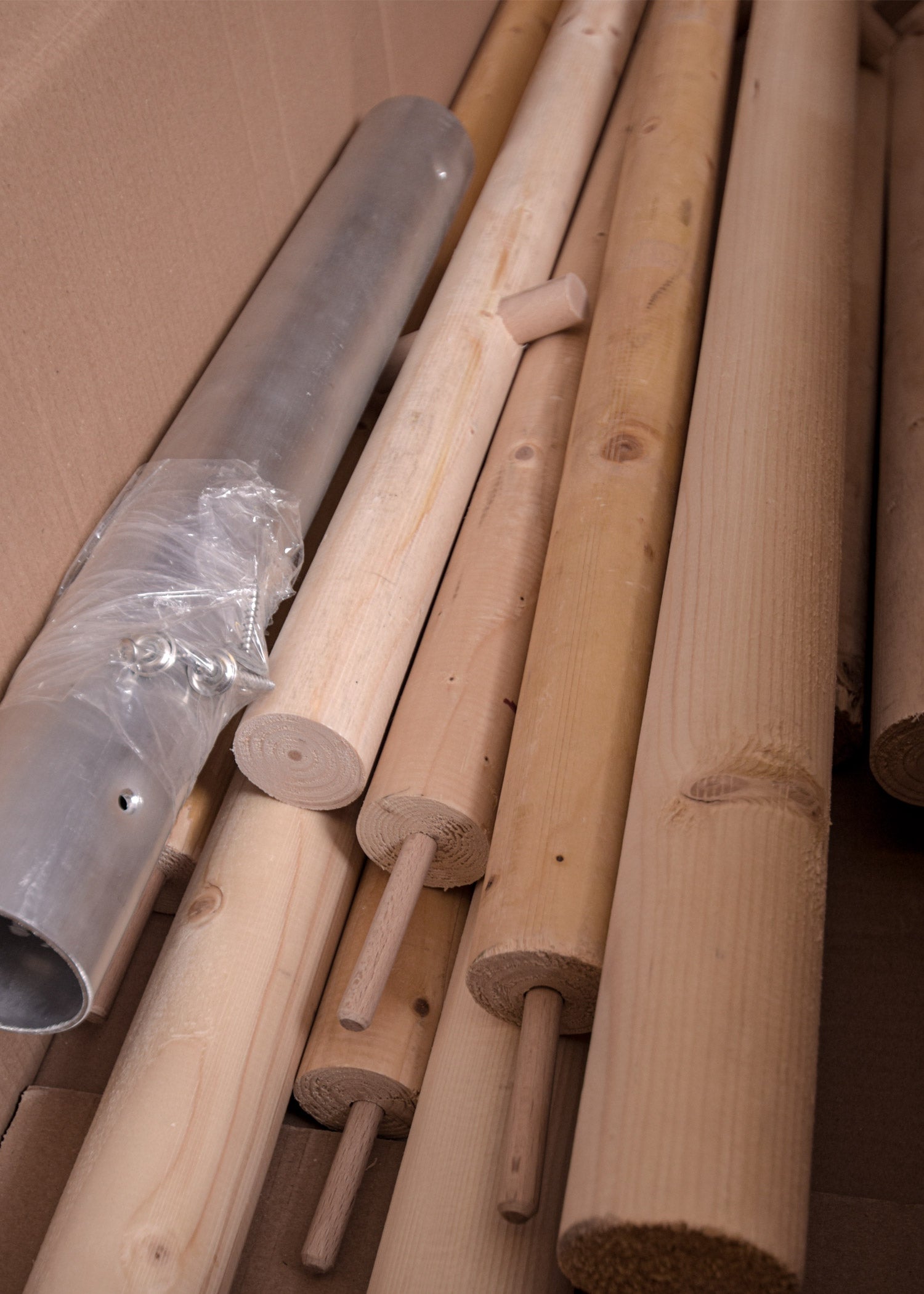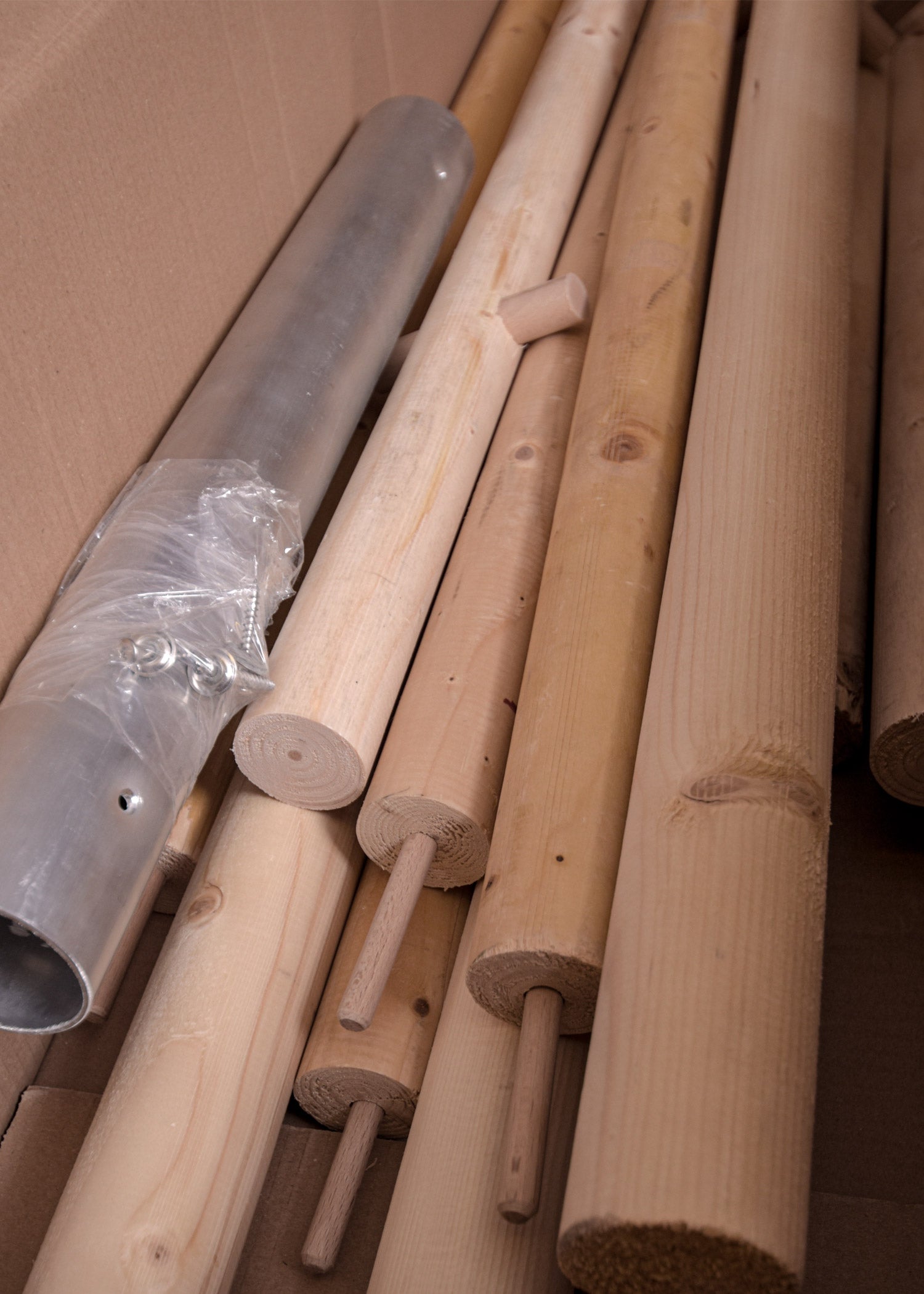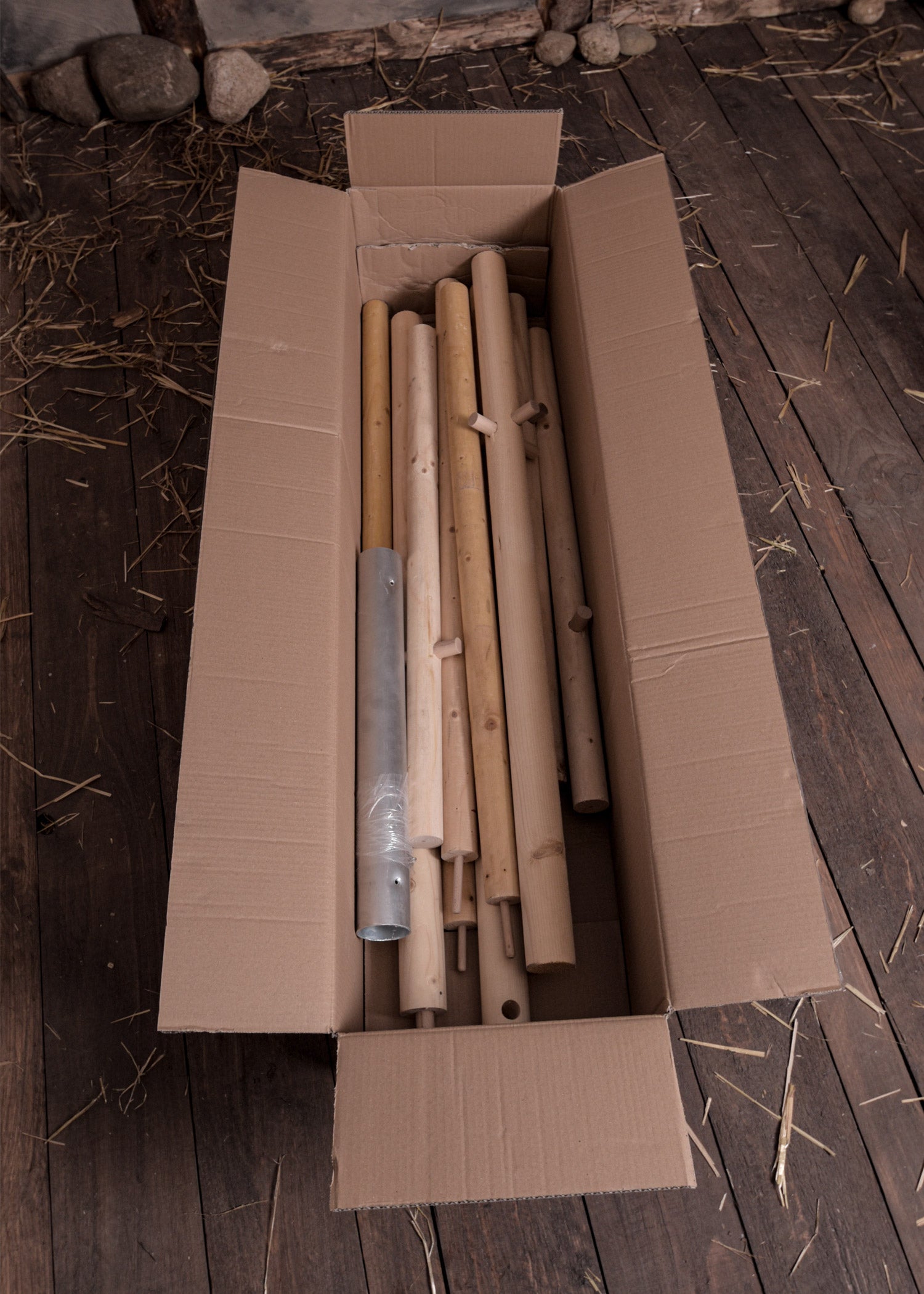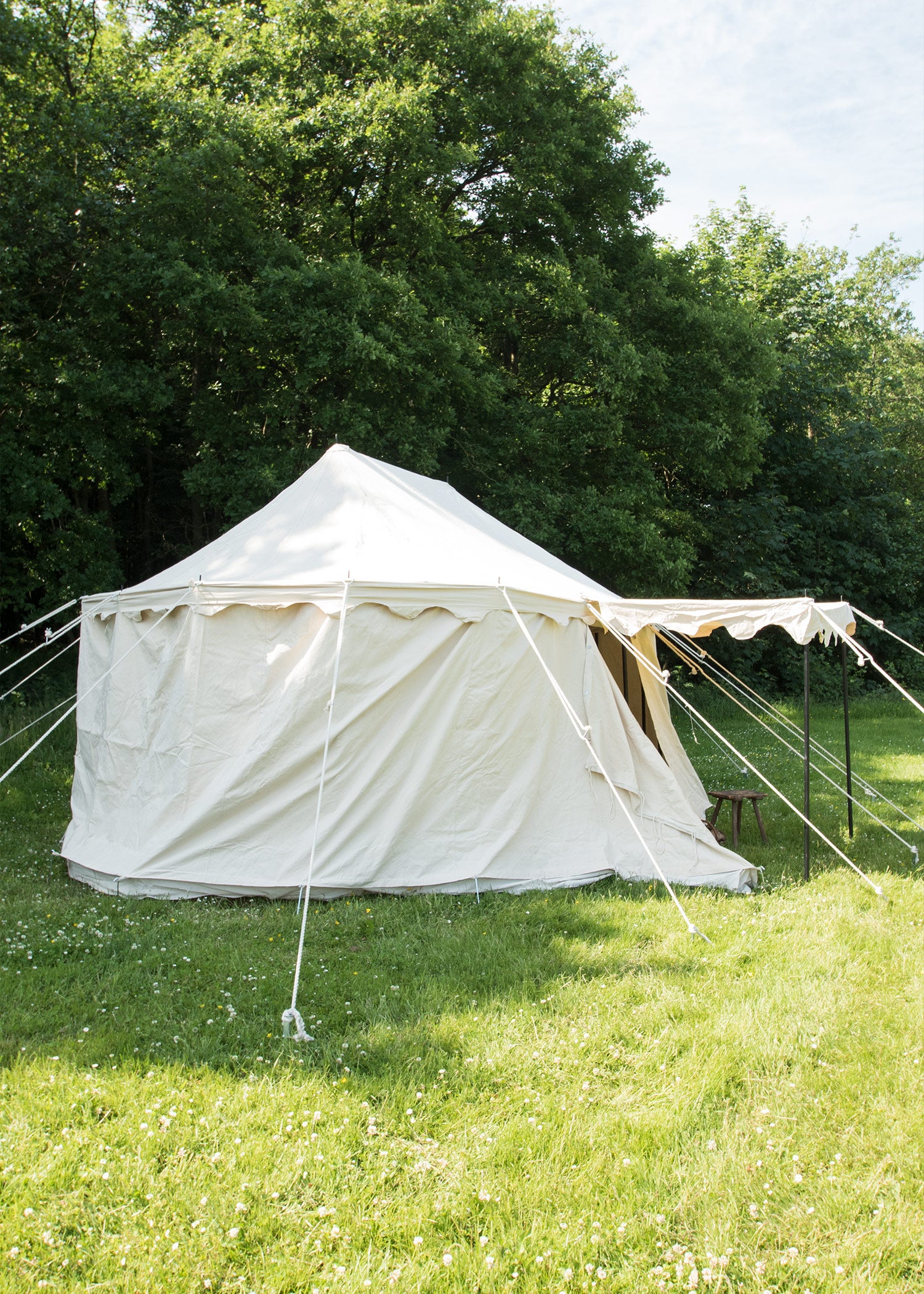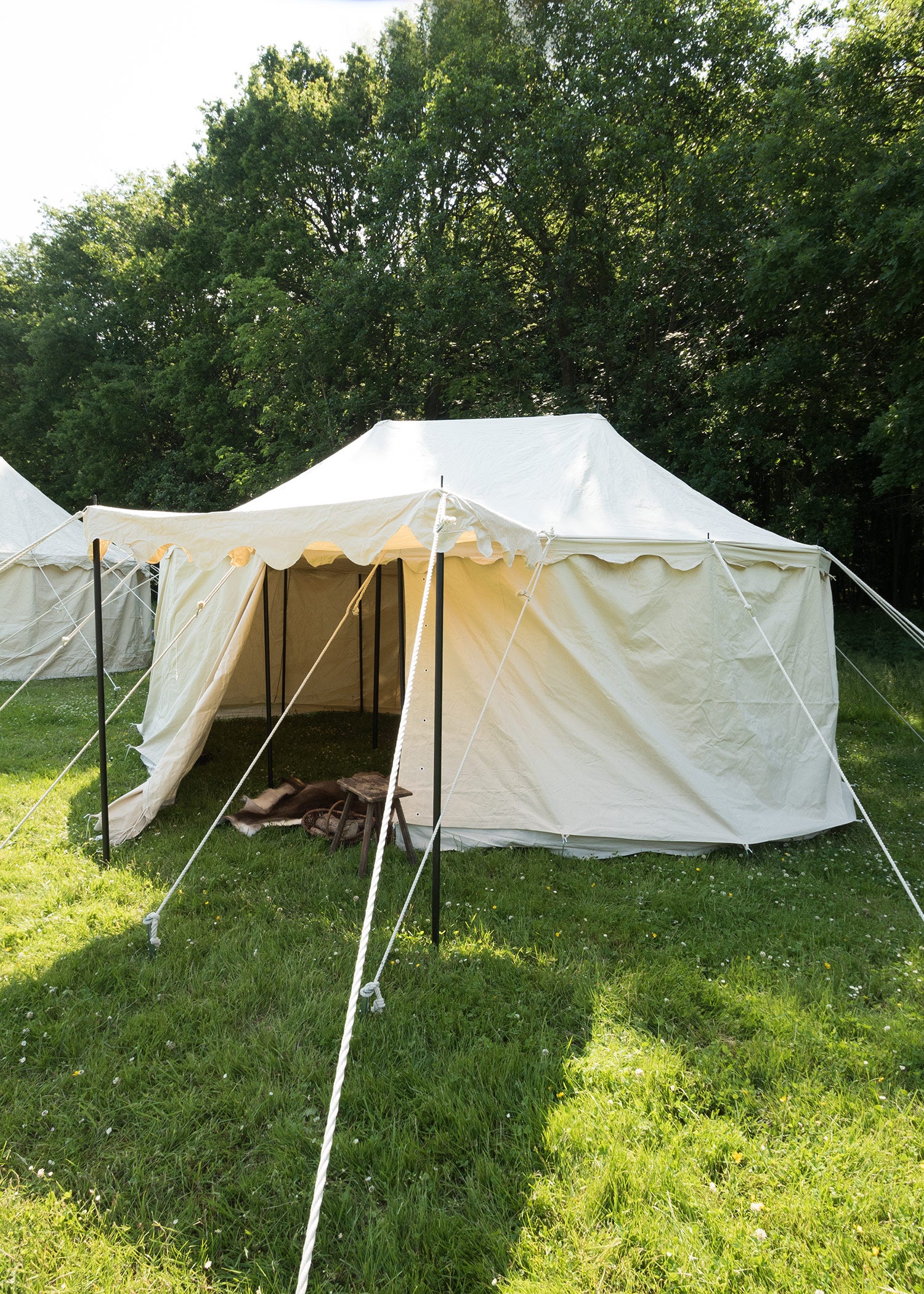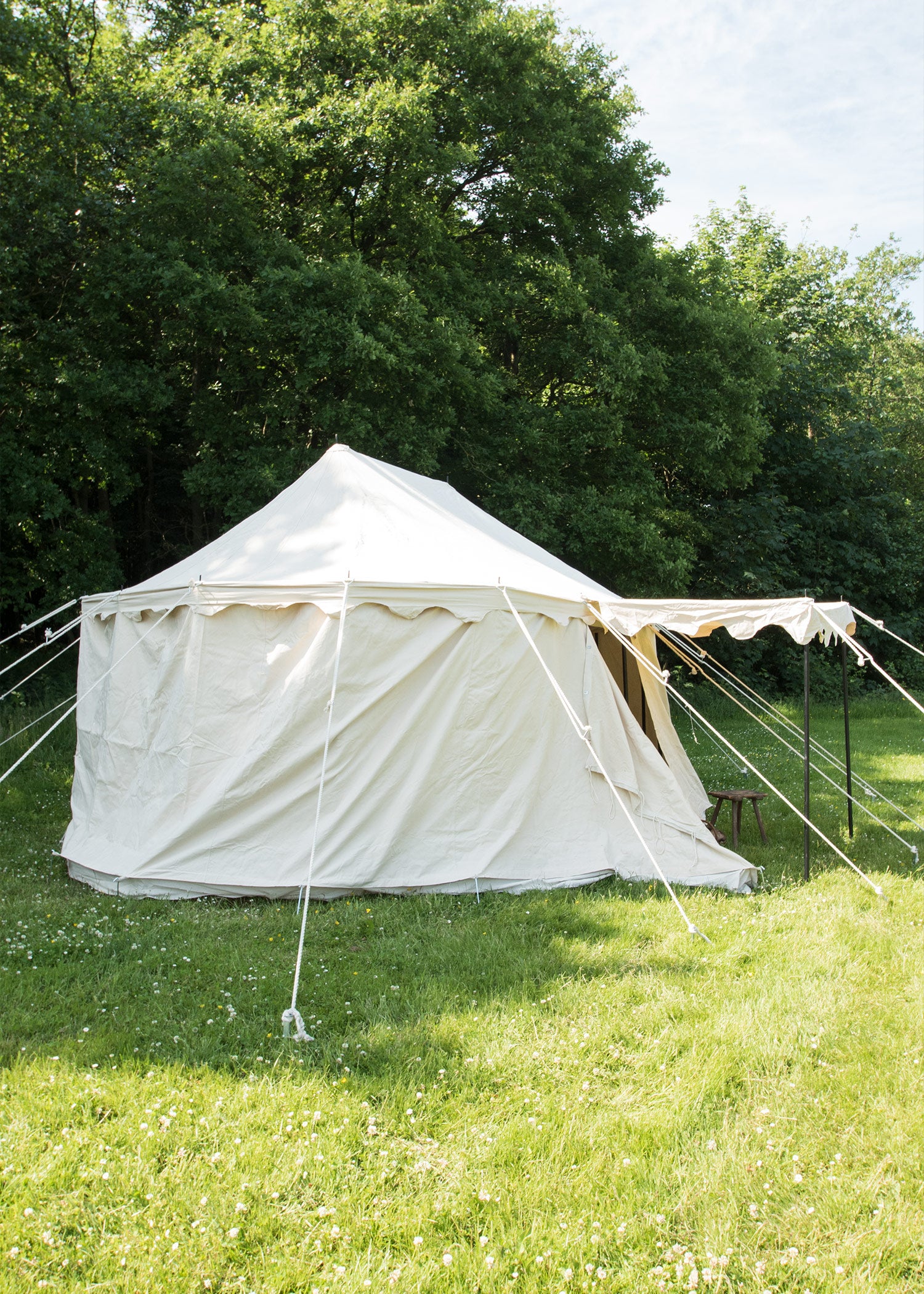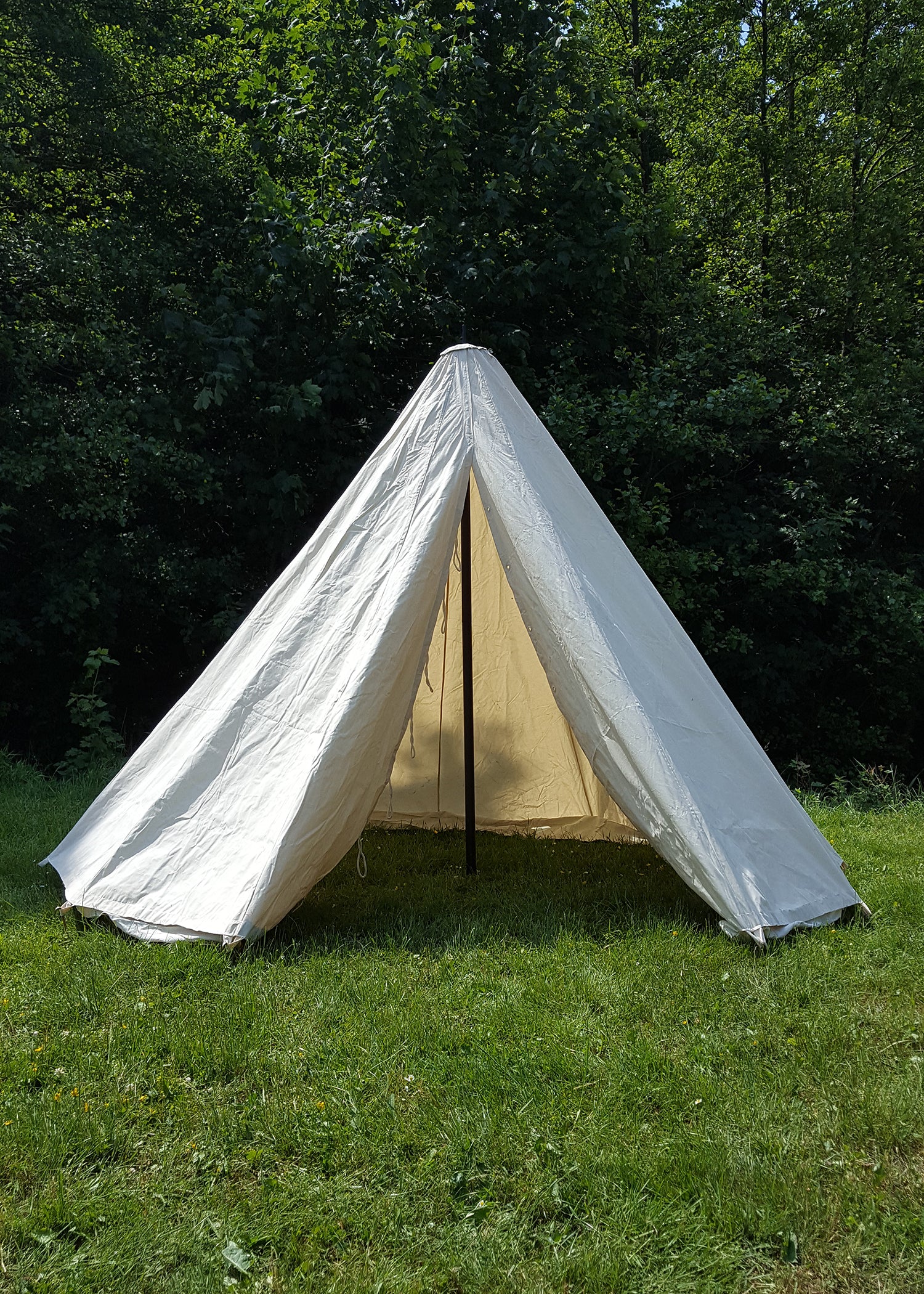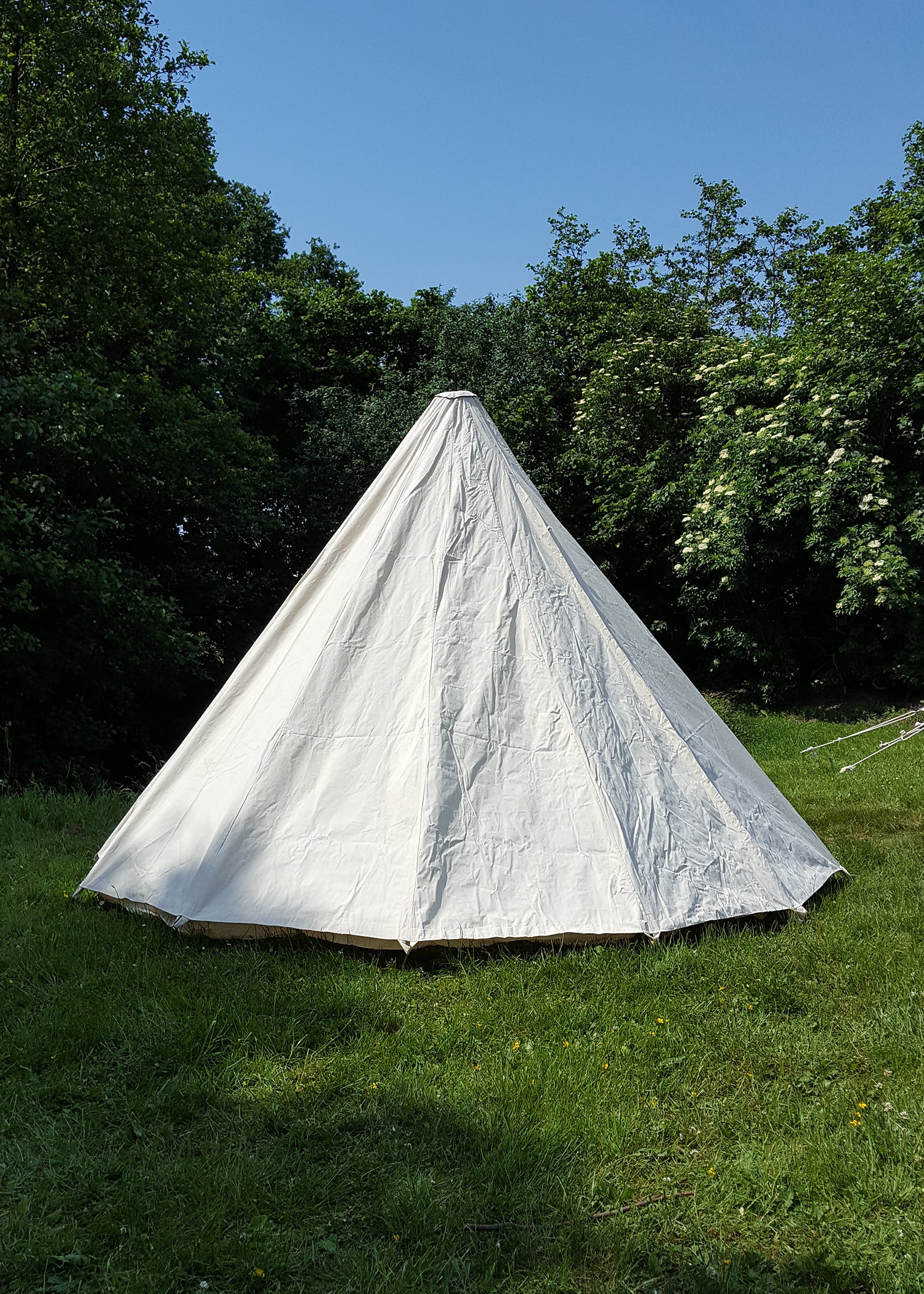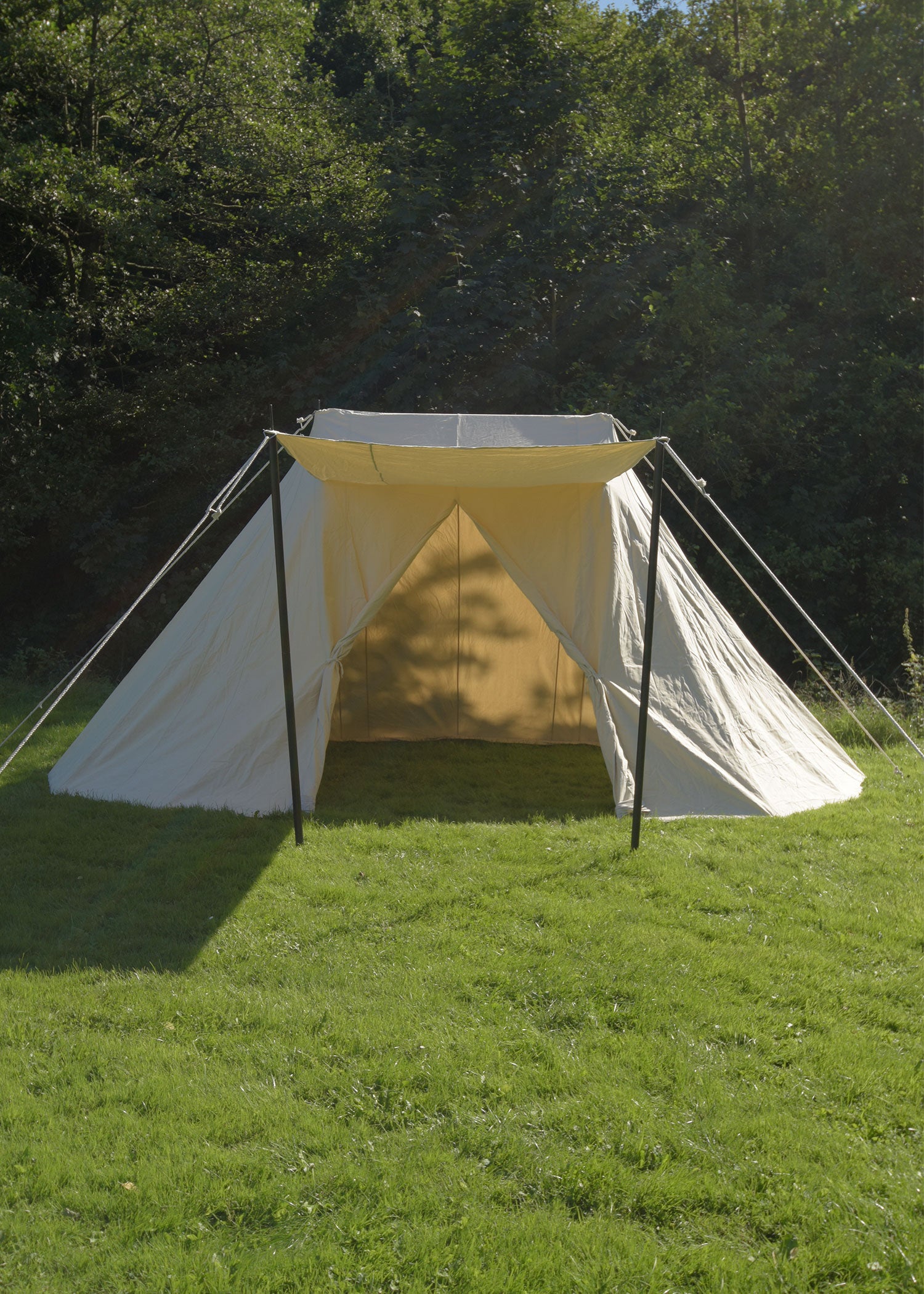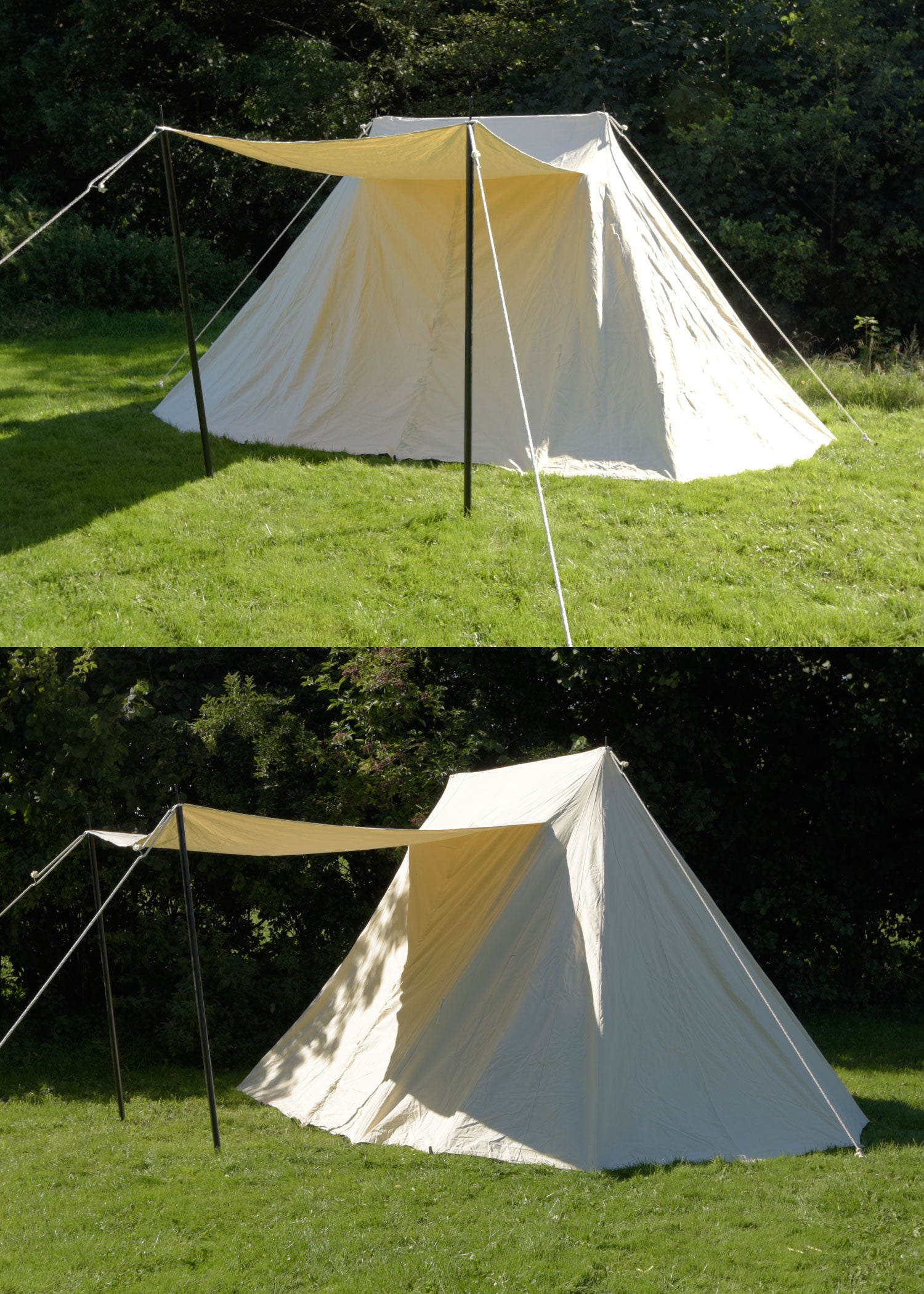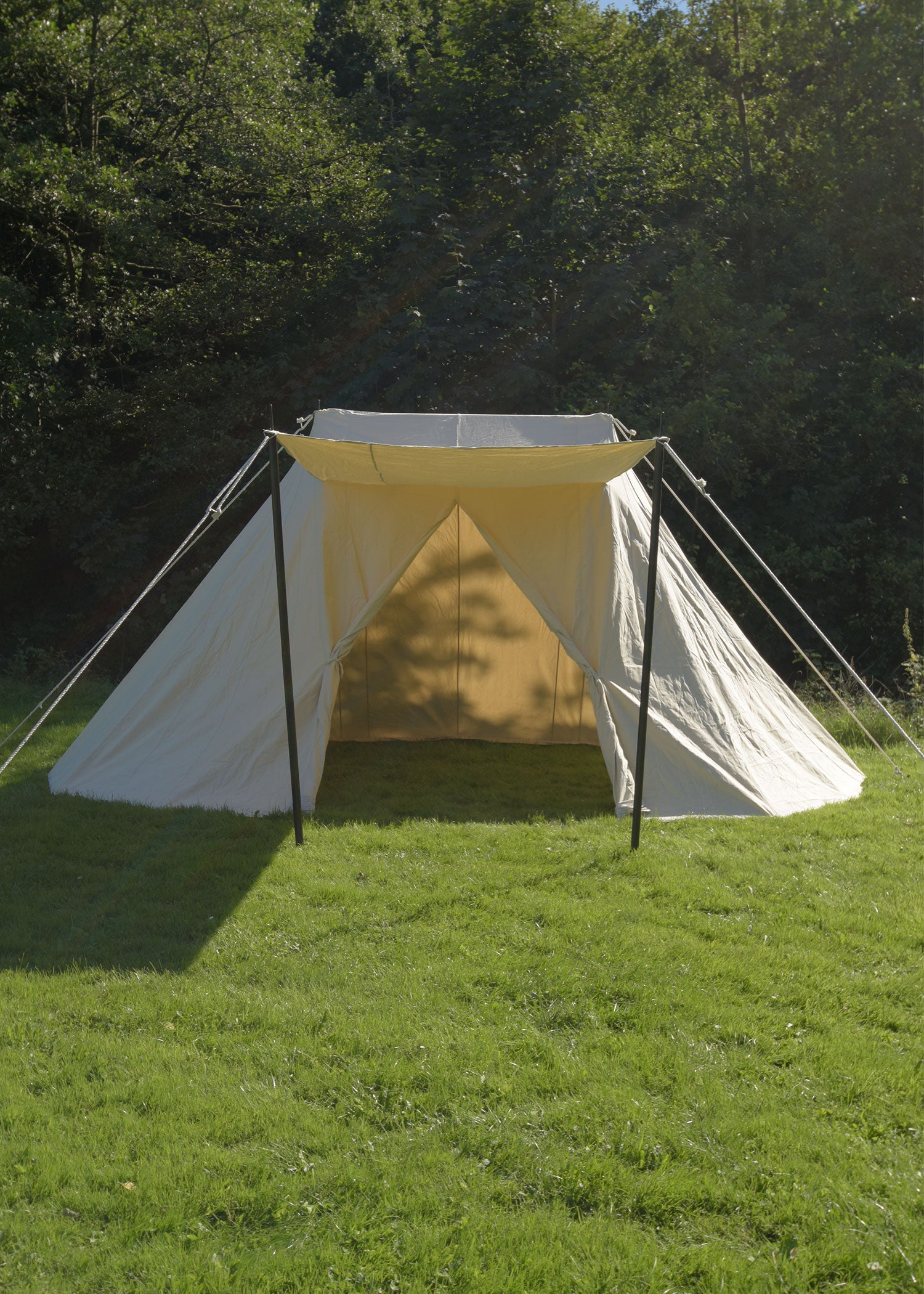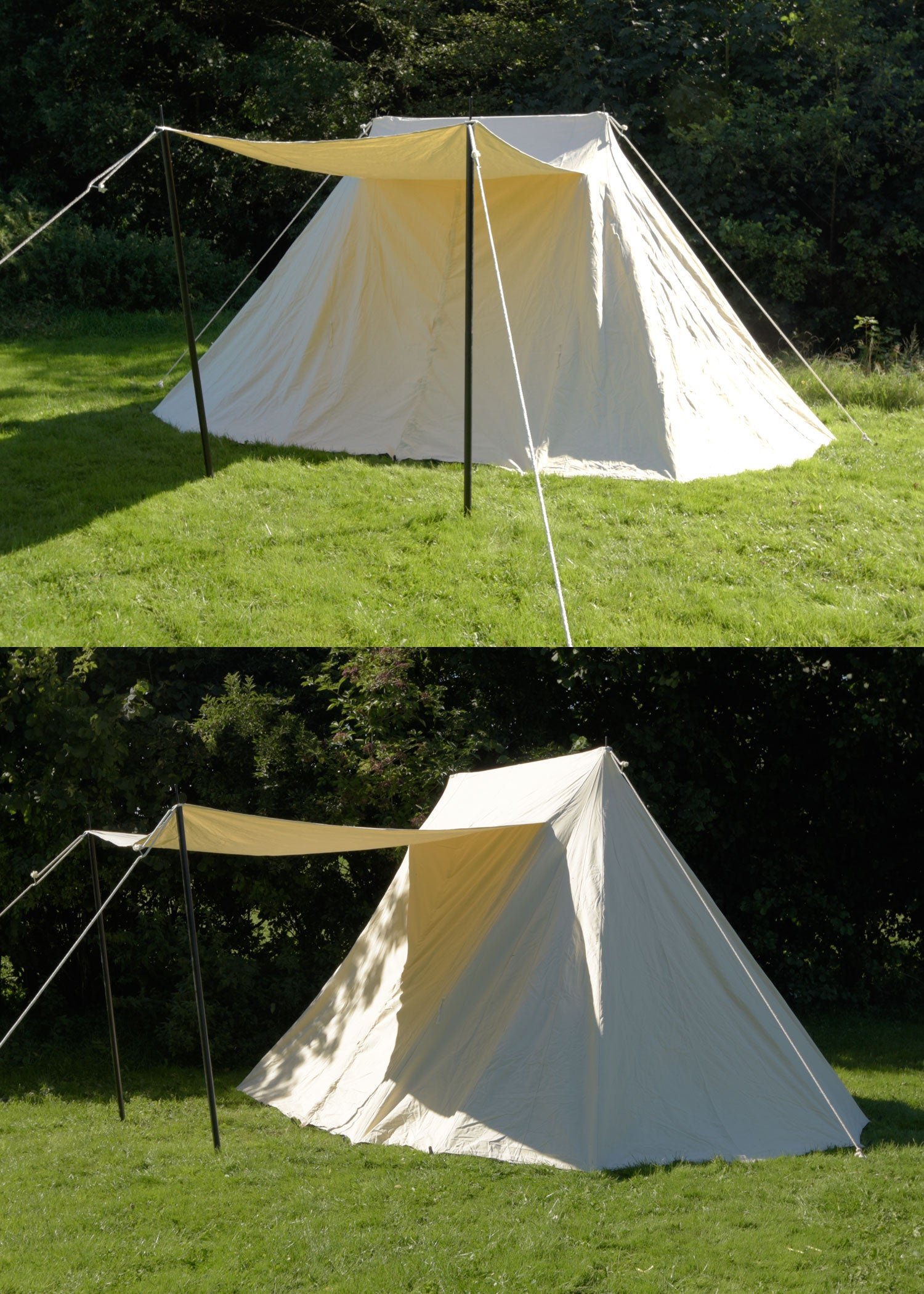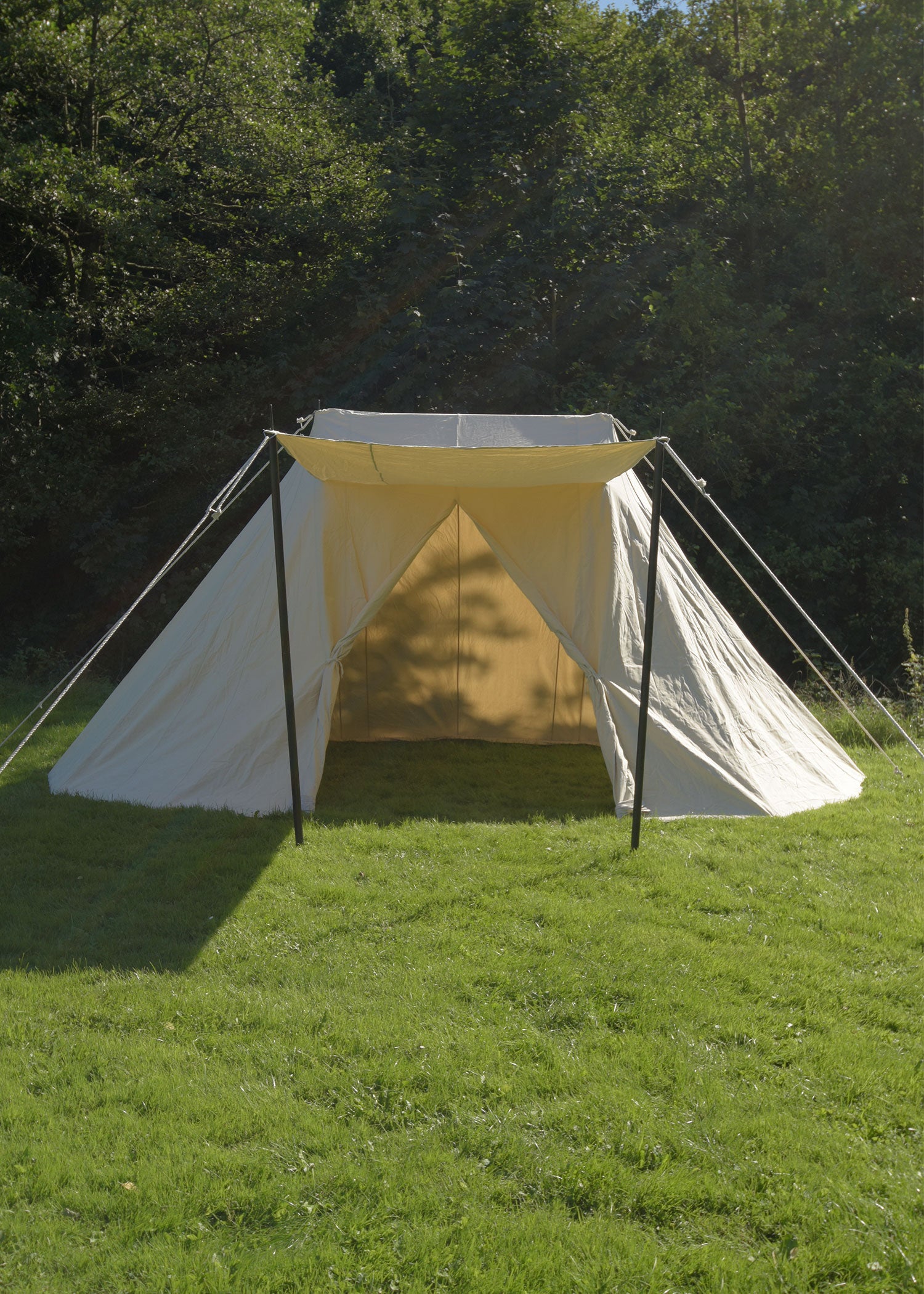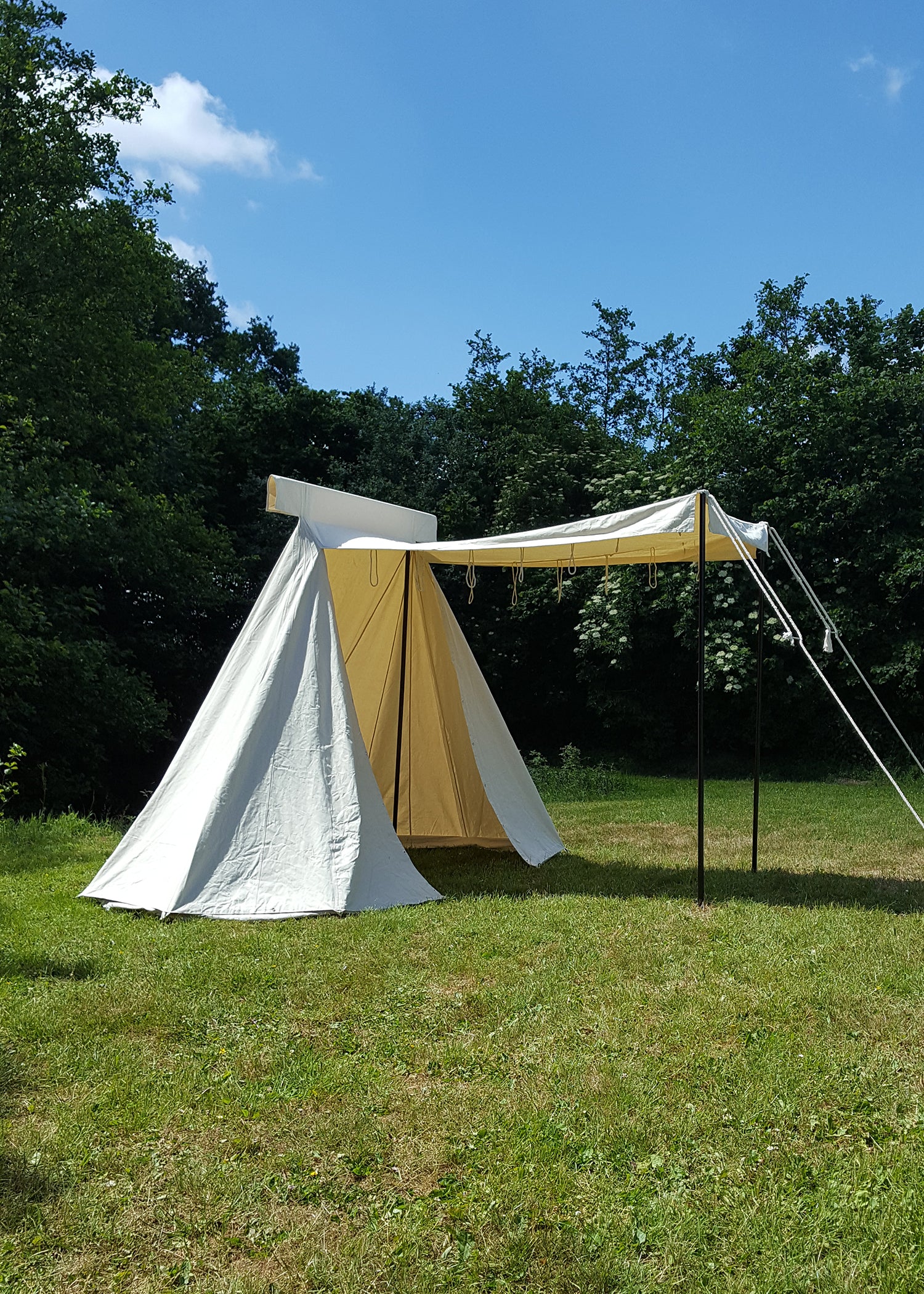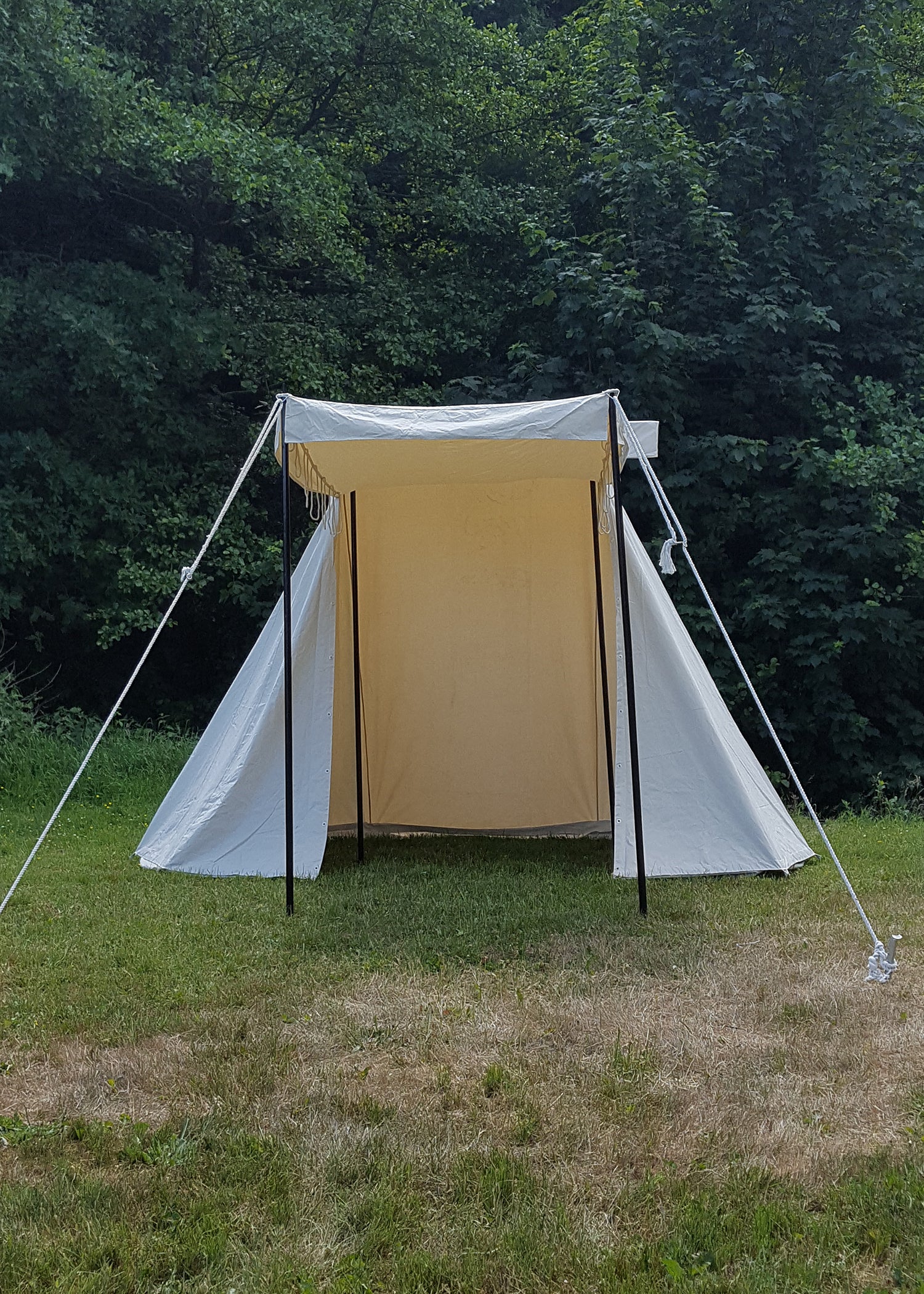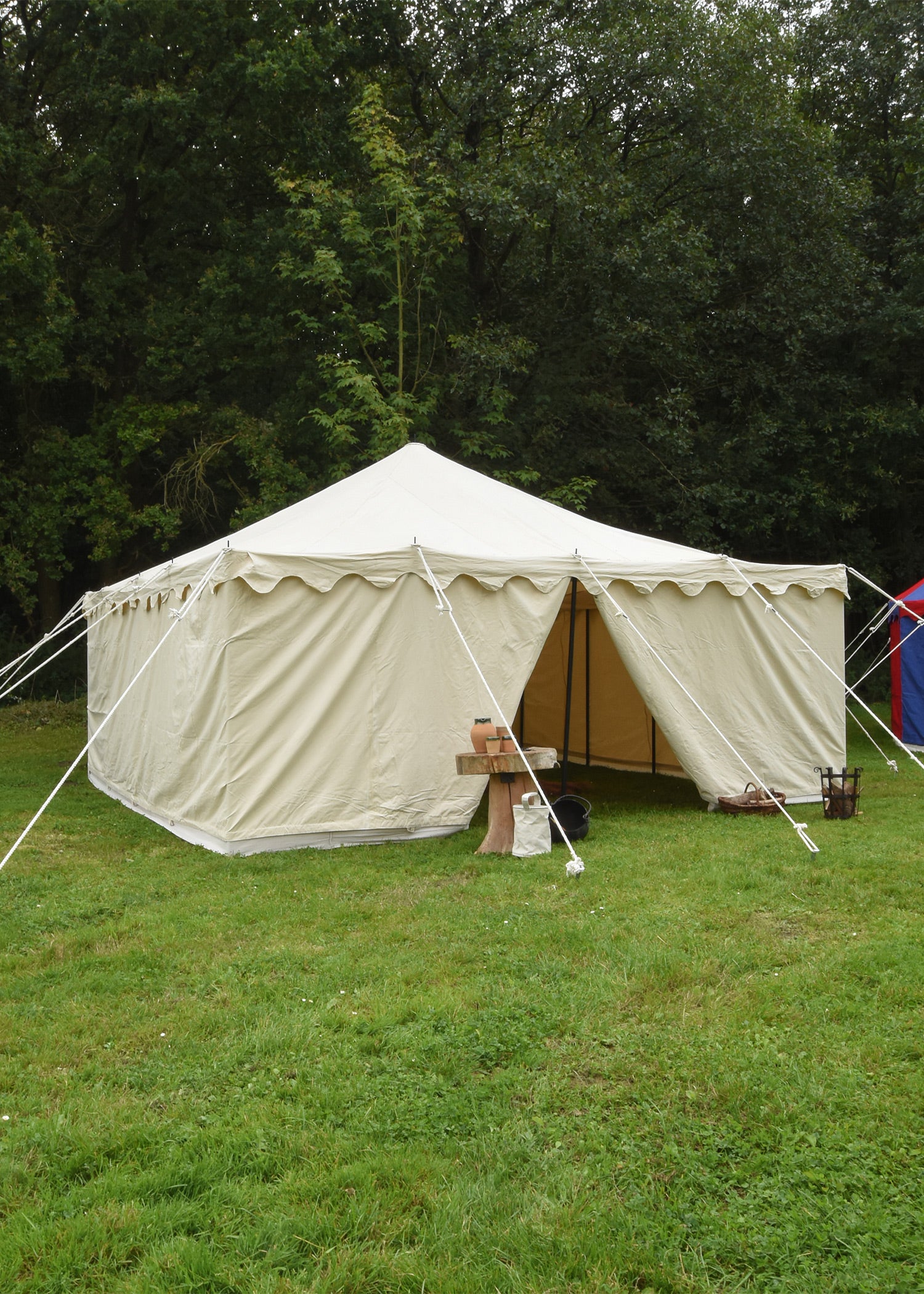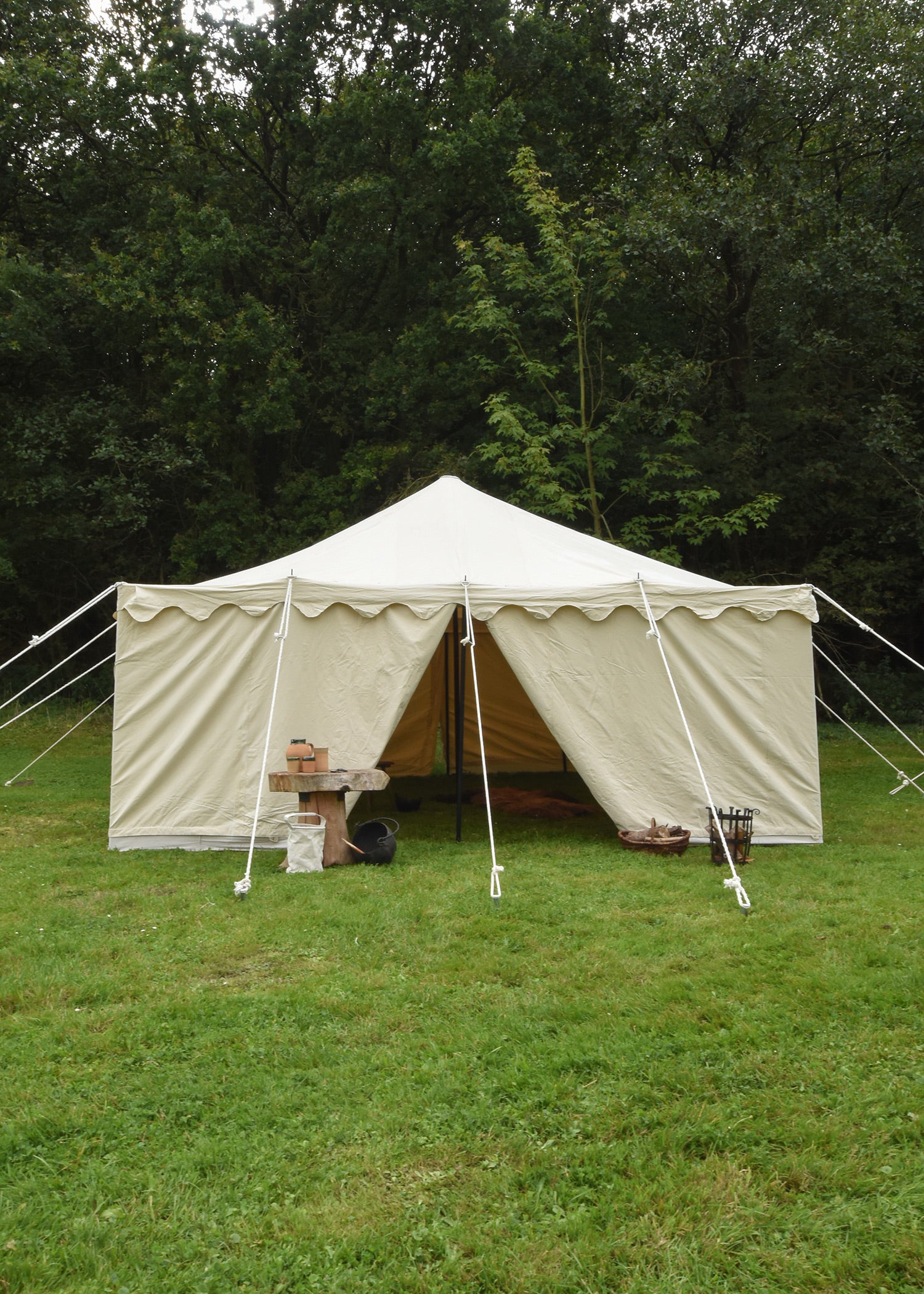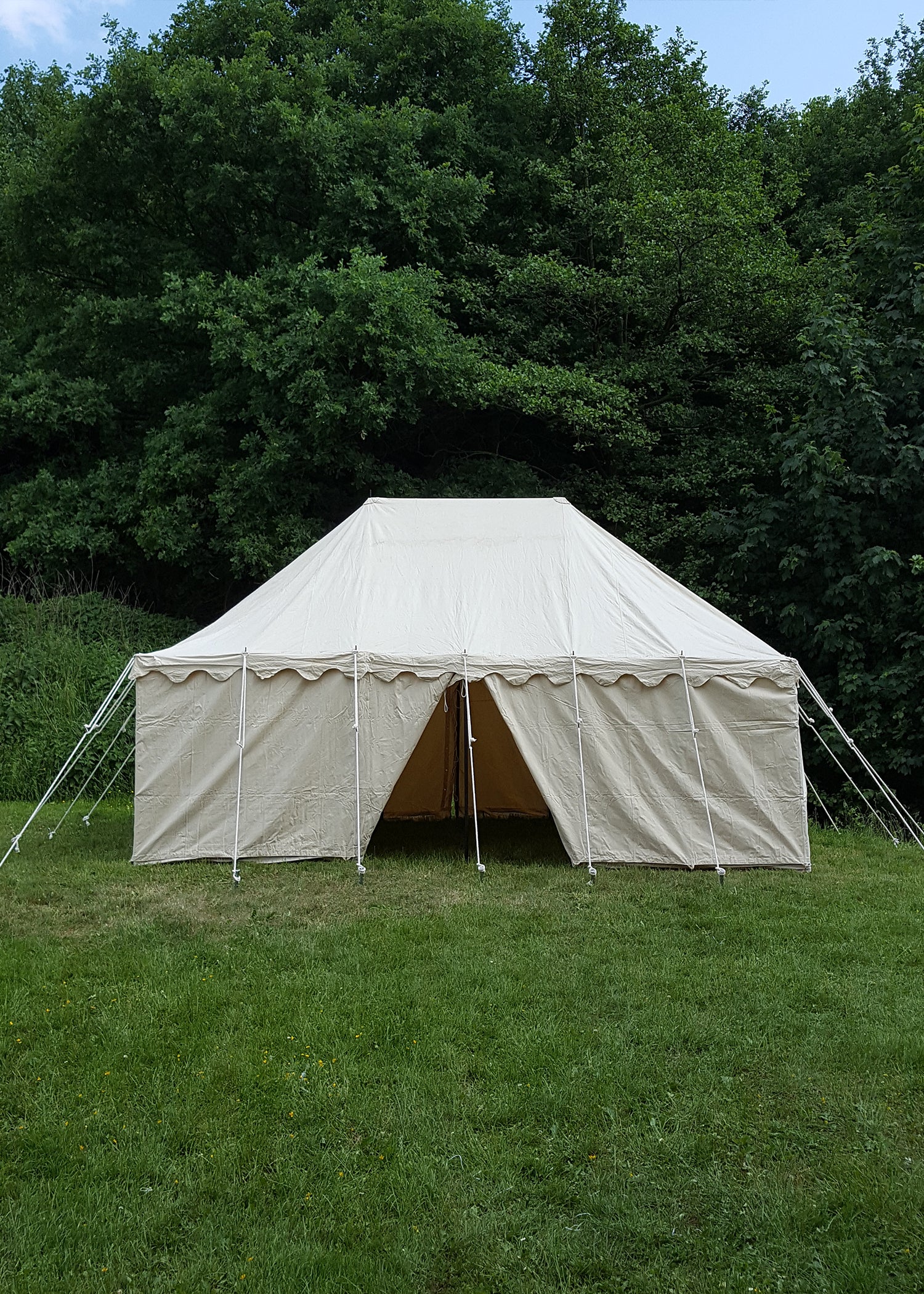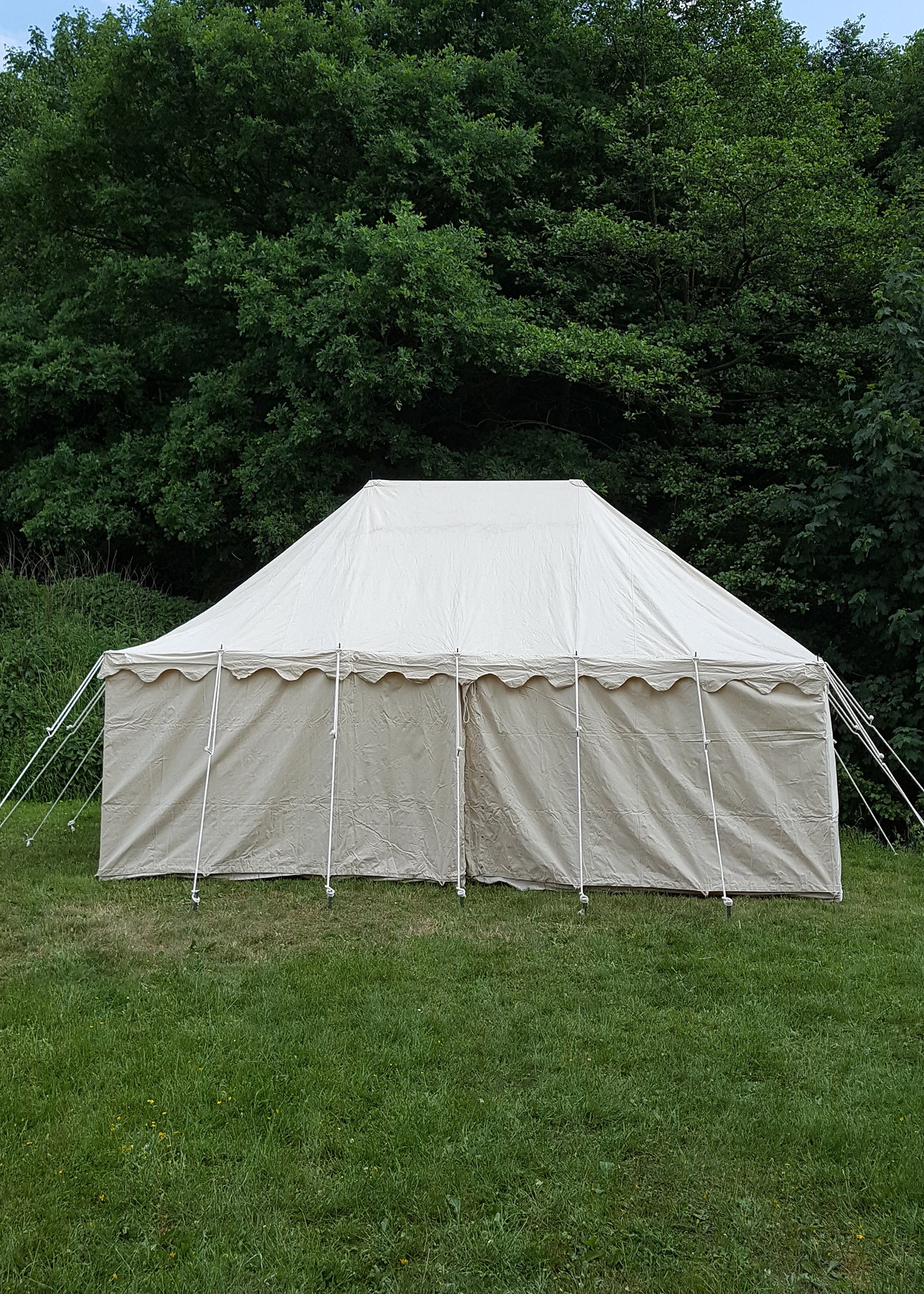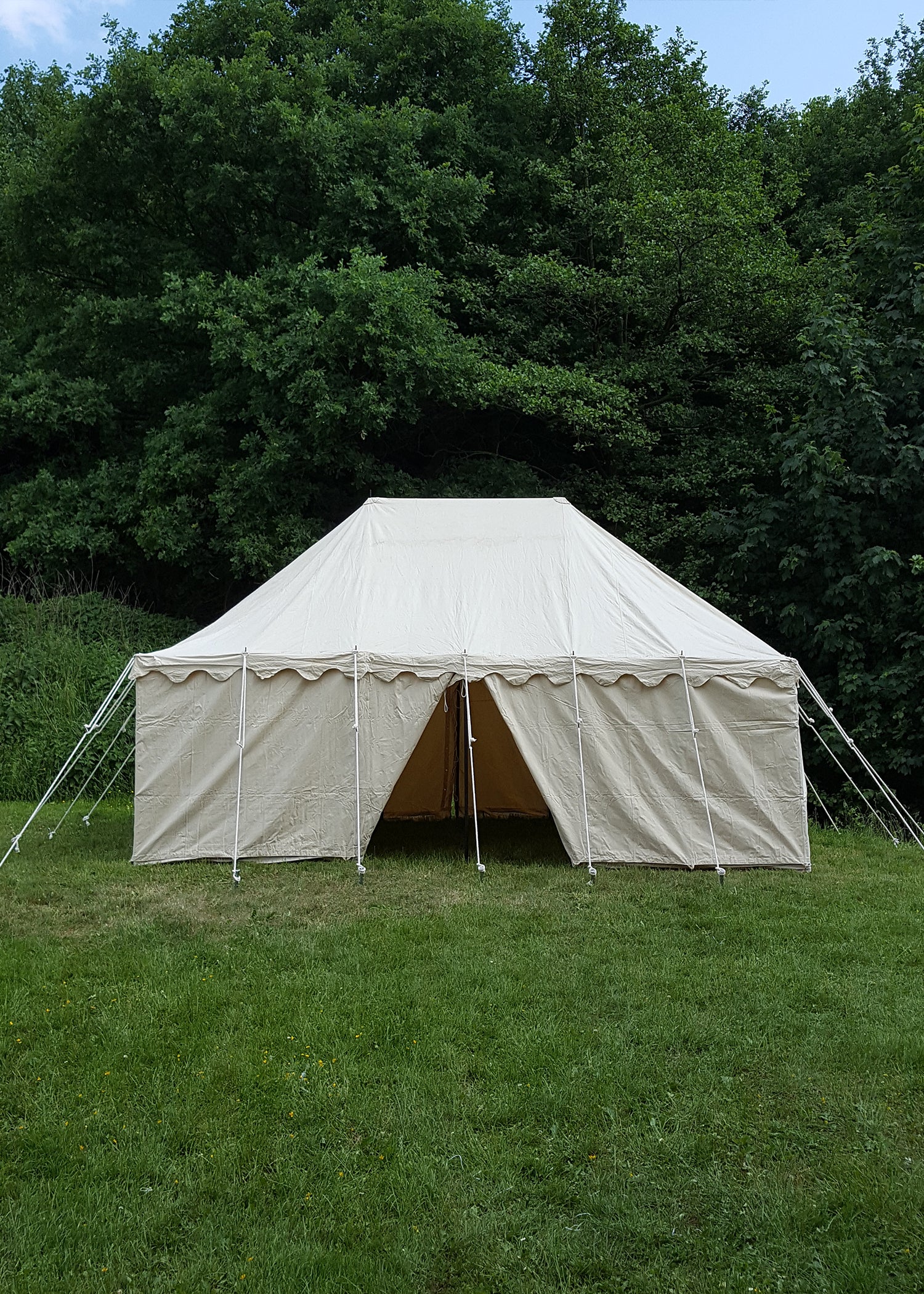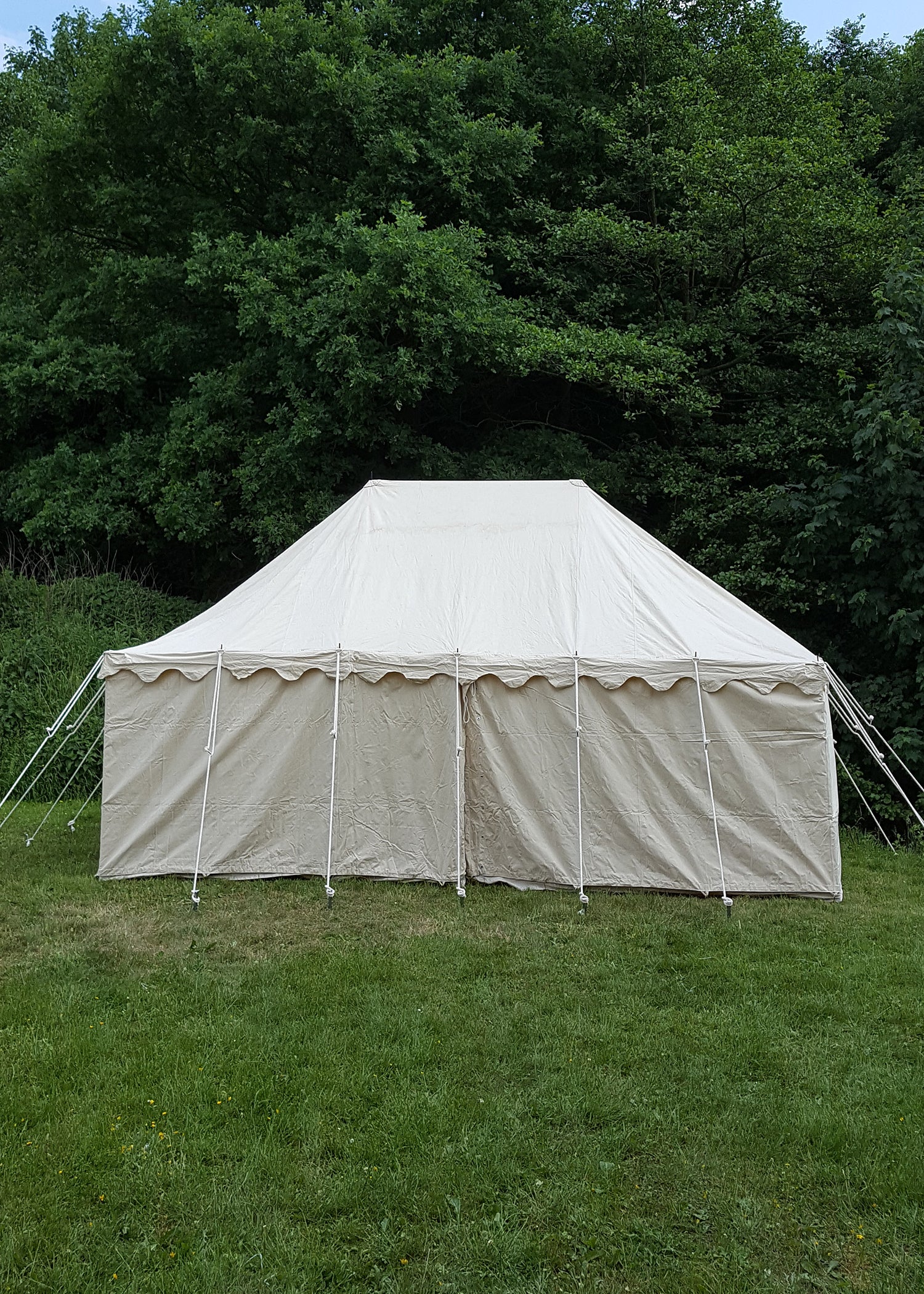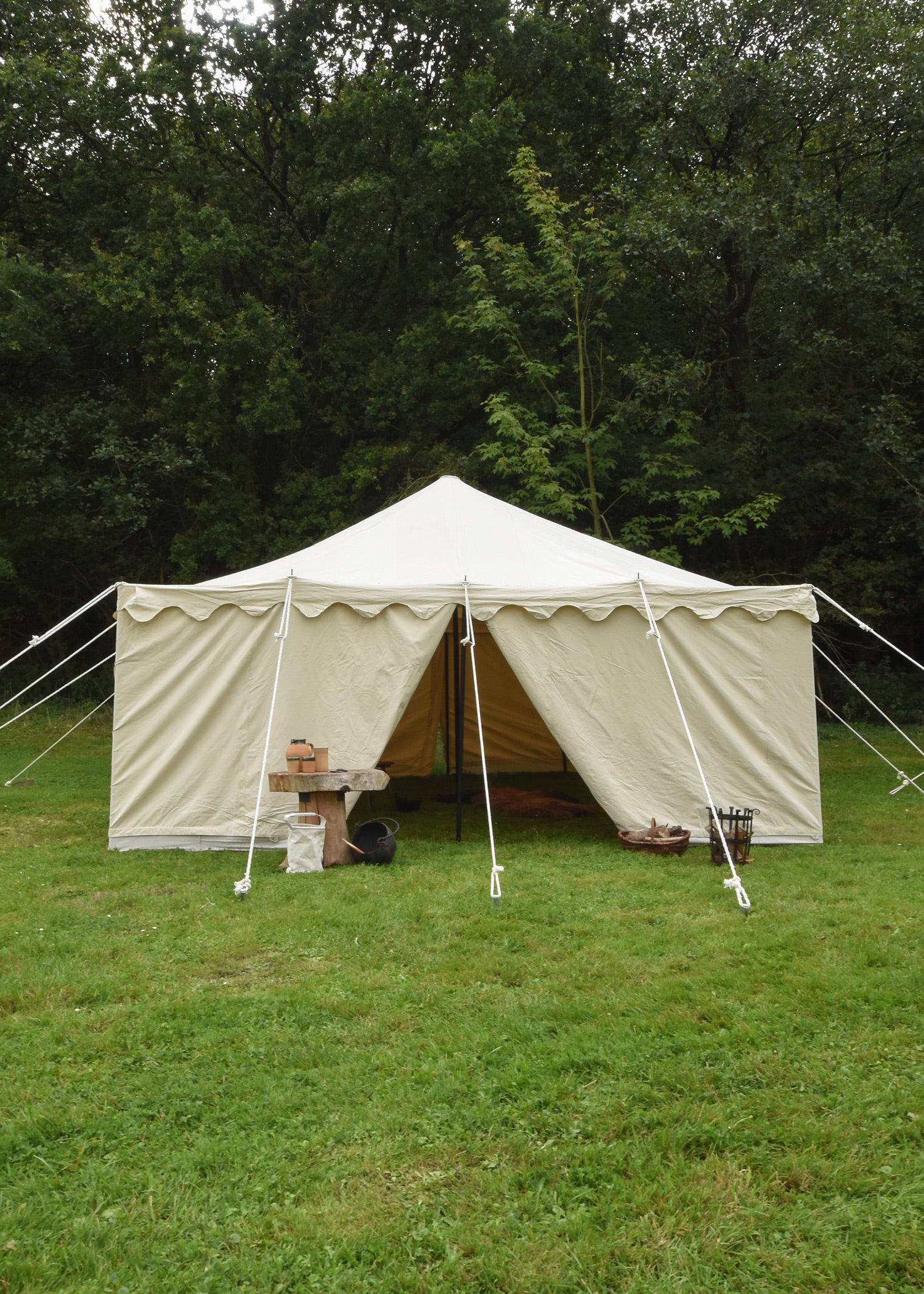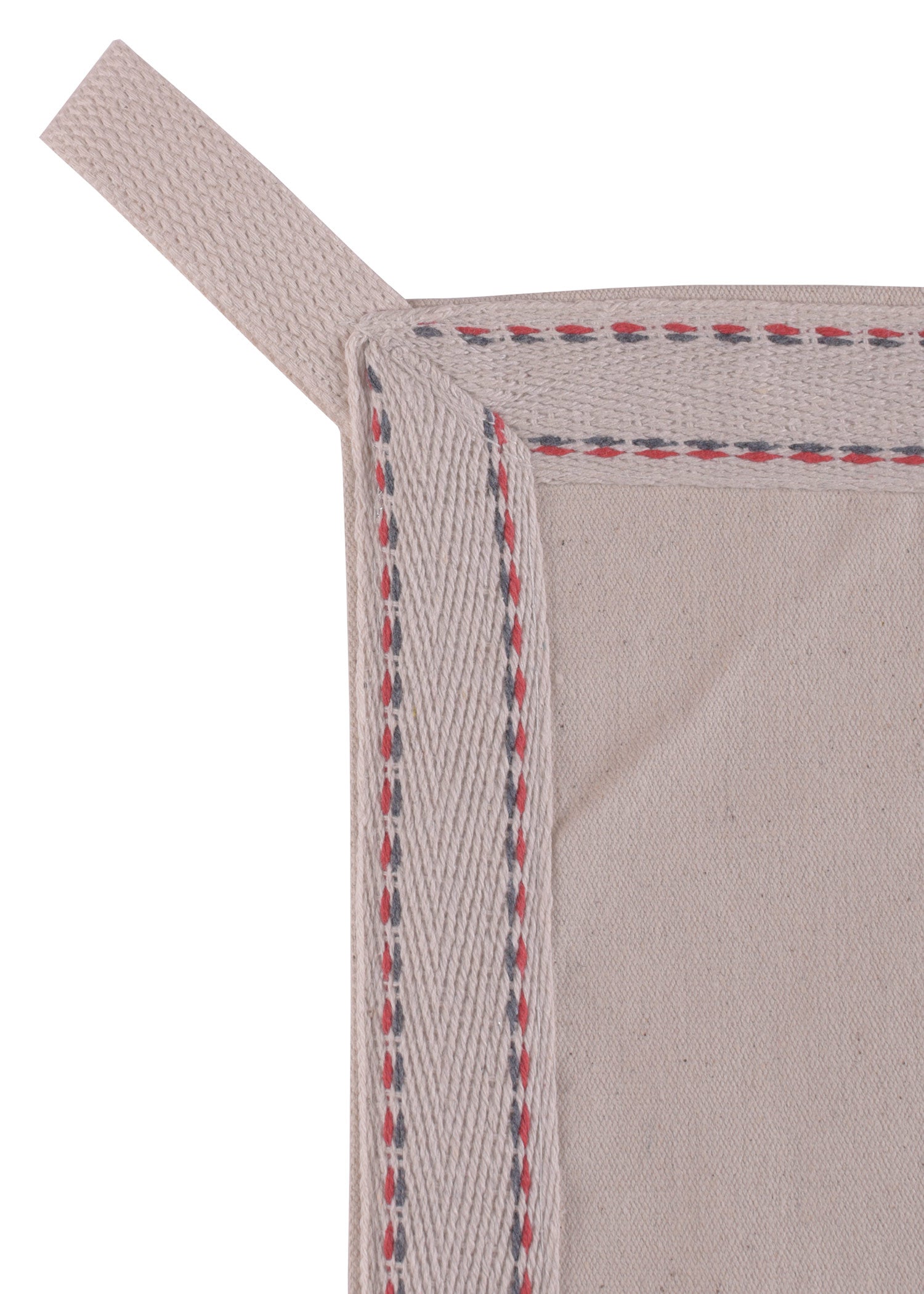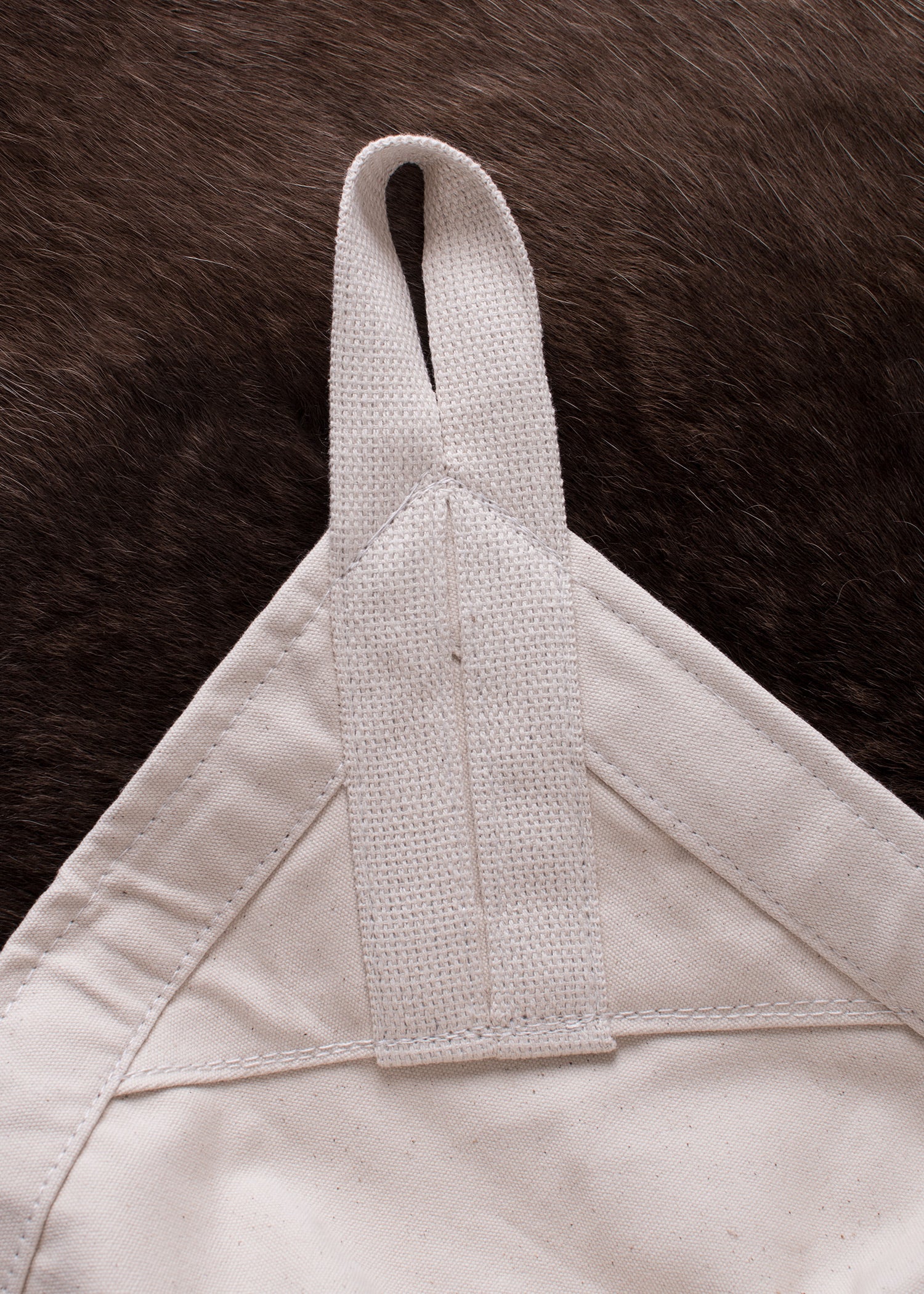Early Medieval Tents: Portable Shelters for Medieval Life
Early medieval tents were essential structures for military, merchant, and nomadic life. Used by knights, armies, merchants, and pilgrims , they offered protection from the elements and a private space for camping and traveling. Made of thick canvas, leather, or wool , and supported by wooden poles, these tents were sturdy and functional, adapting to different uses and needs.
Types of medieval shops
- Pavilion tents : Large and conical or polygonal in shape, used by the nobility and high military command.
- Tents : Smaller and more portable, used by soldiers and traveling merchants.
- Round tents : Similar to yurts, they offered greater stability against wind and adverse weather.
- Rectangular tents : common in markets and fairs, used as sales stands or temporary shelters.
Characteristics of medieval shops.
- Durable materials : Made of thick canvas, treated leather or waterproofed wool.
- Easy assembly and disassembly : Designed to be quickly transported and assembled on different terrains.
- Reinforced structure : Wooden supports or tensioned ropes for greater stability.
- Decorated design : Some noble tents featured bright colors and heraldic emblems.
Differences with stores from other cultures.
- More robust and durable : Unlike Viking tents, which tended to be smaller and more functional, medieval tents could be larger and more ornate.
- Widespread military use : In the High Middle Ages, armies used huge organized camps with tents specific to each rank.
- Feudal influence : While in other cultures they were more uniform, medieval shops varied according to the status of their occupants.
The tents of the Early Middle Ages were key to battles, fairs, and expeditions. If you're looking for replicas of medieval tents for historical reenactments, events, or medieval settings , you'll find authentic and functional options at Tienda Medieval .

